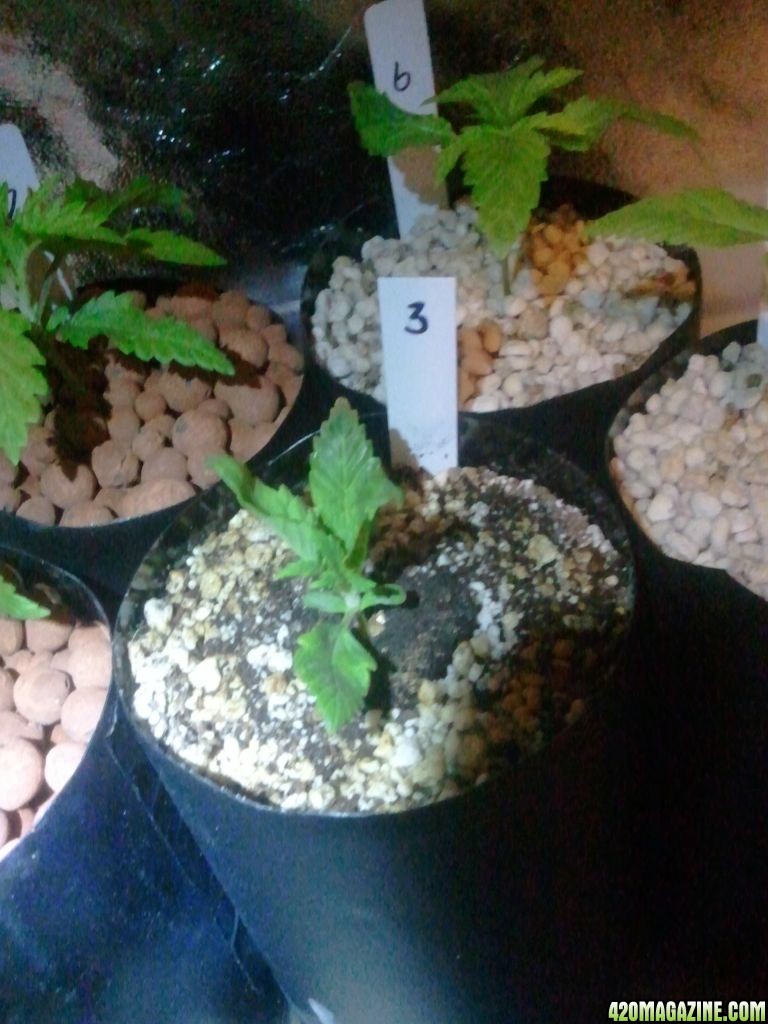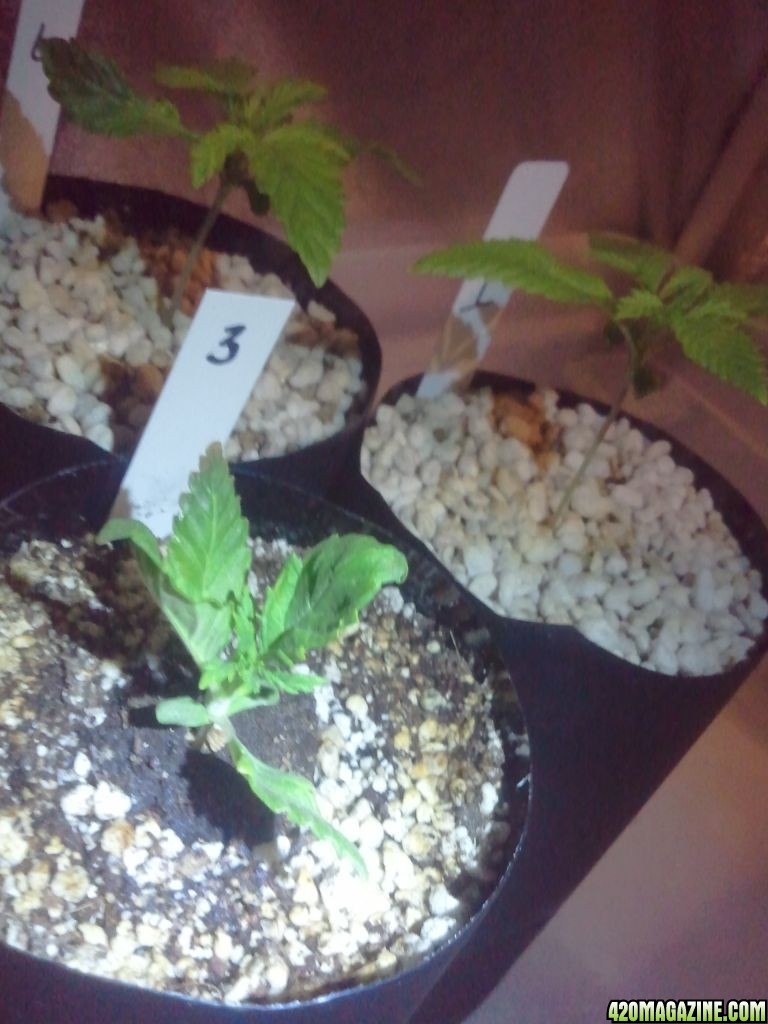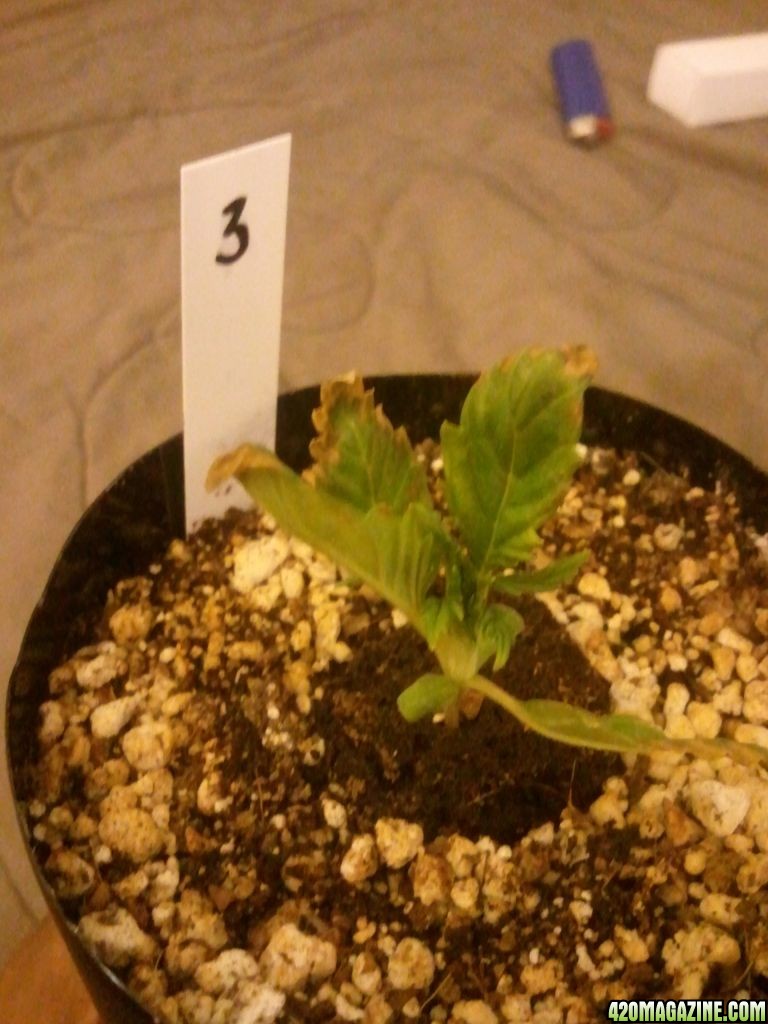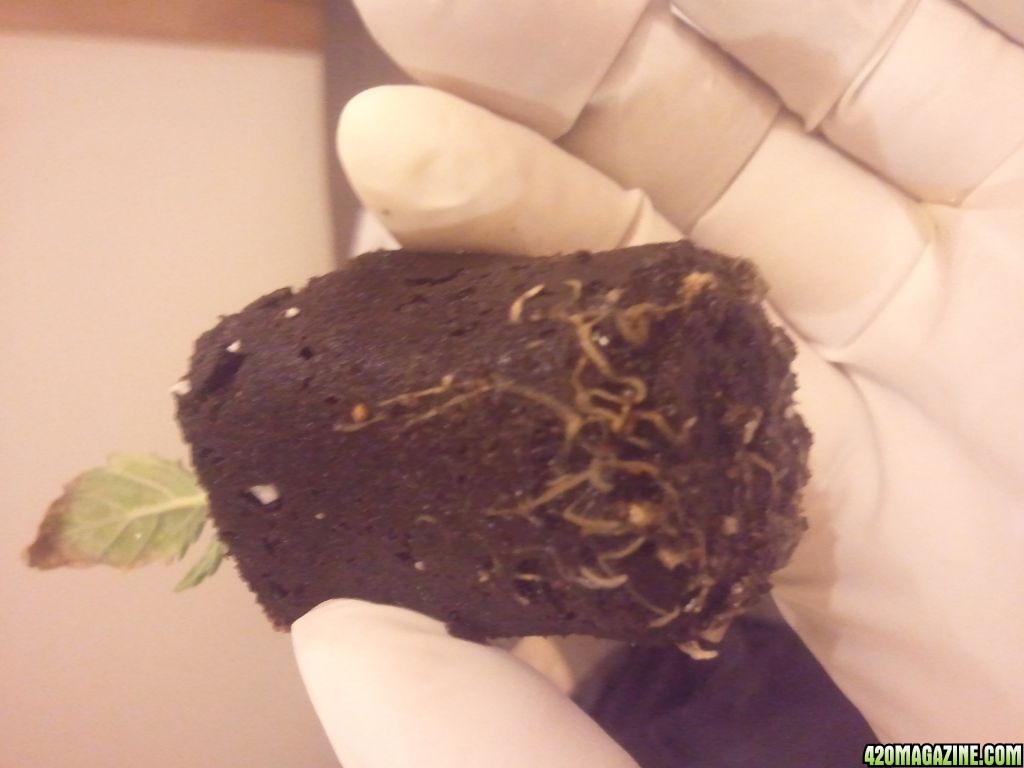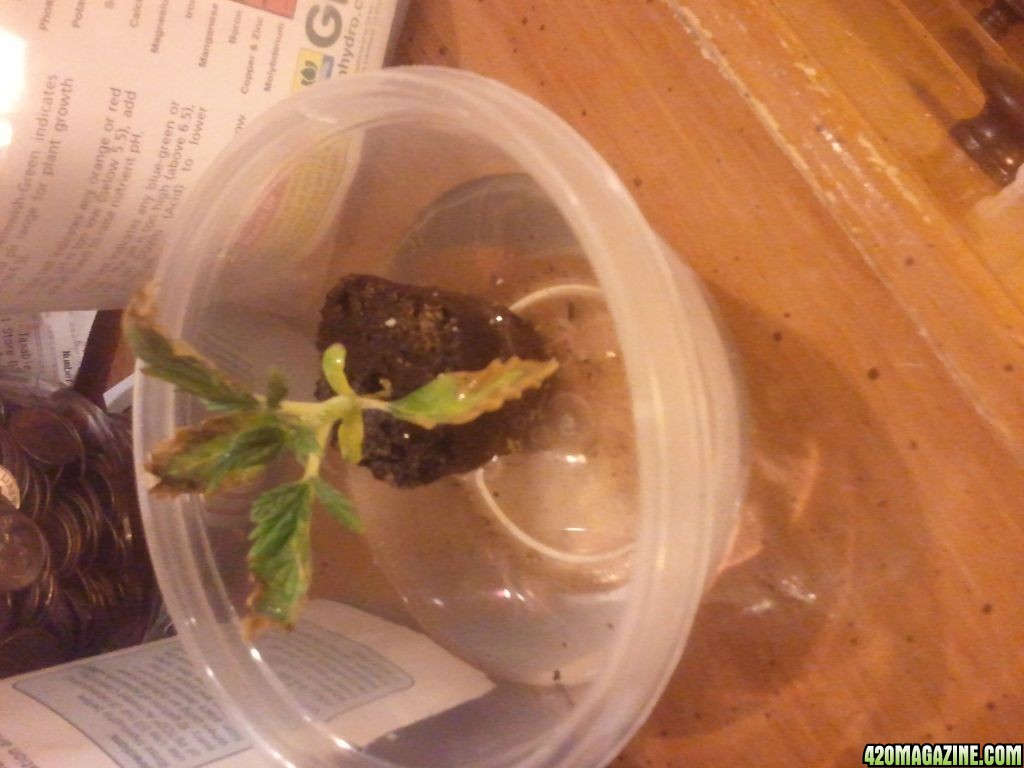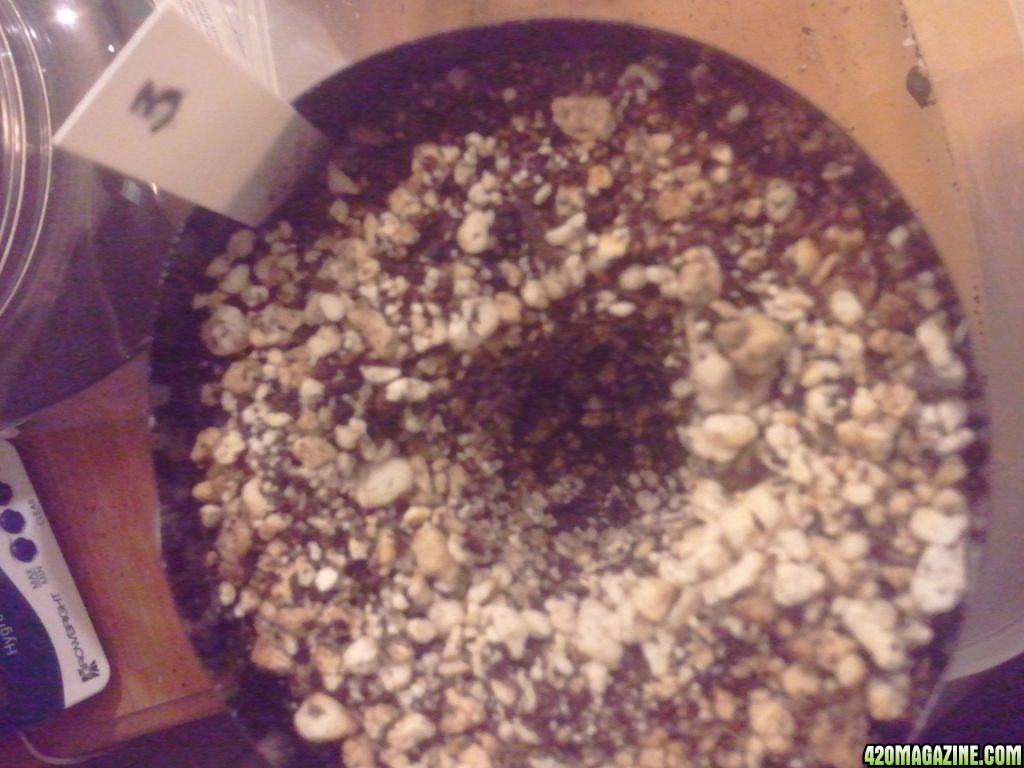In the words of Rocky and Bullwinkle:"Now for something you'll really enjoy!"
So, I spent countless hours searching for answers to all kinds of questions in my head, and eventually I came across a very promising carbon scrubber guide on another site. I've modified it using what supplies I could find/thought were best, and tried it out. Now you guys can all try it out, cuz it kicks a$$!
First all the supplies:
2'x5' hardware cloth or chicken wire with 1/4" square holes $10
6" duct connector $4
8" to 6" duct reducer $4
(2) 6 1/2" hose clamps $3
(4) 4 1/4" hose clamps $5
4" end cap $3
6" end cap $3
XXL opaque black pantyhose $2
a very strong epoxy or sealant glue $5
about 7 pounds of activated carbon pellets $35
Tools needed:
wire snips
a good marker
something to rinse the carbon in
vice grips or pliers are helpful, but not necessary
So I rang in at $75 for the whole setup, which is at a bit cheaper than a comparable store-bought filter, and I can always empty this one and refill it, so cost on the next filter will be only $35. Also, I have a full 2 inches of carbon that the air must pass through, quite sure that this is more than what most retail offerings provide, and the more carbon touches the air, the more odor will be reduced. Also, I have greater airflow with chickenwire than any mesh on a retail filter, so my fan will pull more air over this, therefore I can use a slower, cheaper fan. Mainly, it was just more fun for me to do it myself, and gain some knowledge. The one drawback mine has as compared to the top-of -the-line models is the conical base, which I am still searching for, and can add at any time. A pre-filter can be put on here, but I see no point, as it will decrease airflow, and I'm growing plants, not cutting wood - I don't have large particles floating around the air in my room, just odor molecules.
The chickenwire comes with a thin wire of the same material wrapped around it to keep it in a roll. You have to remove this before you do anything, but don't throw it out, it will come in handy very shortly. The first thing to do, is cut your chicken wire so that you have 12" of solid squares going all the way across, not counting any that have 1 or more wall cut off, If you can buy 12" chicken wire, then skip this step. Now that you have a roll of 12"x5' chickenwire, clean the edges by cutting all the little spikes that are no longer cubes. It makes it much easier to work with this stuff if you don't have it snagging on everything it touches, including your skin, so try to trim it as smooth as you can without skipping over into the next square. Now start off with the 6' duct connector, and use it as a core to roll the chickenwire around. While carefully holding the wire in place, and after making sure it is straight all the way across - not crooked or wrinkled - I used a marker to make a line where it overlaps about 1". I measured mine at 20" long. You don't want to connect it end to end, it will be flimsy, you want that overlap. Use that wire from the beginning (cut into pieces an inch or 2 long, then bent at the bottom, like a fish hook) to thread between the overlapping sheet o mesh, then use your plies to pinch it closed. grab it a mm or so up, and twist it to lock it in place, then snip it off, leaving enough that it will stay twisted and attached. To further reduce snag risks, try to turn these so that they stick out towards the inside of the tube.
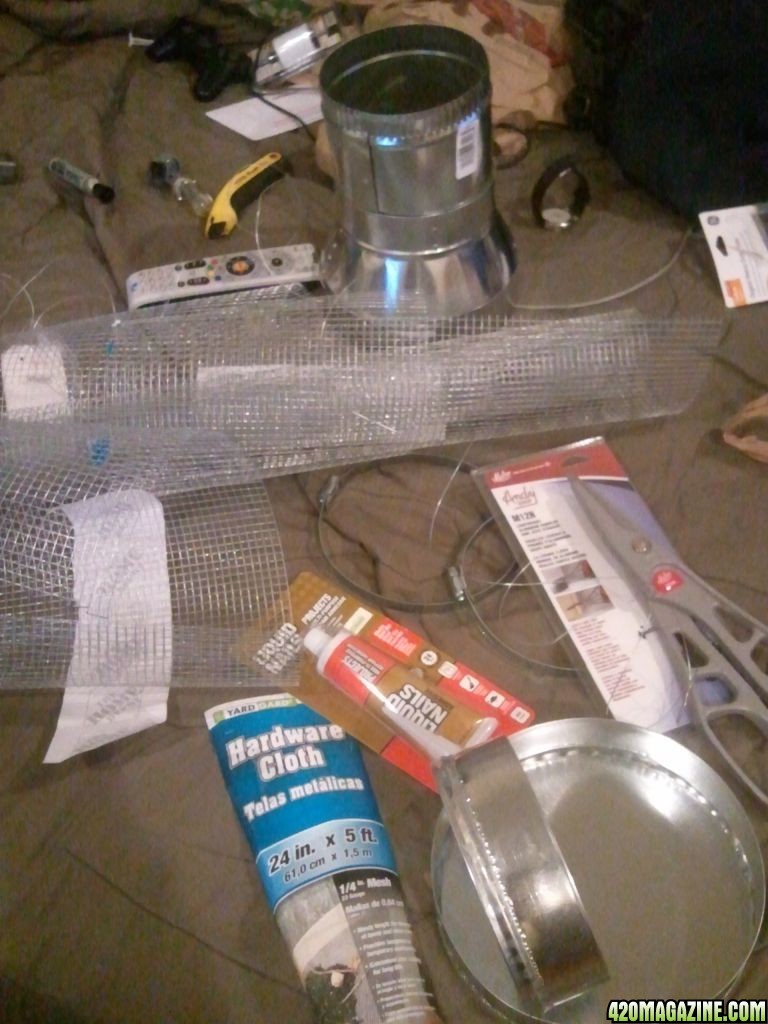
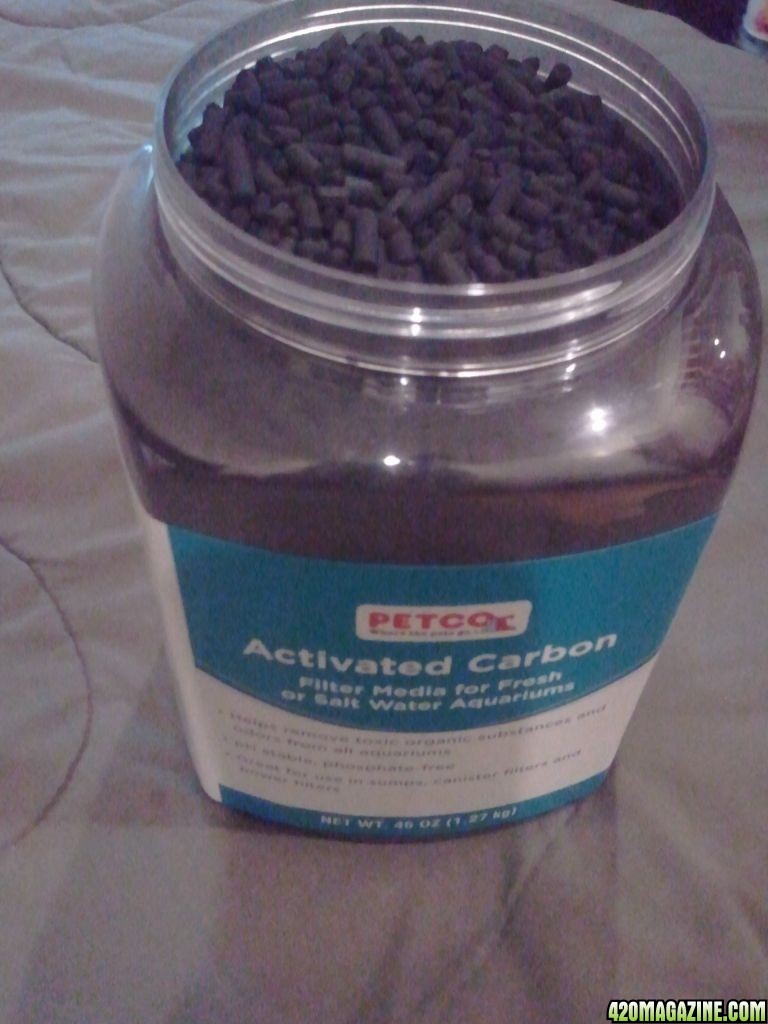
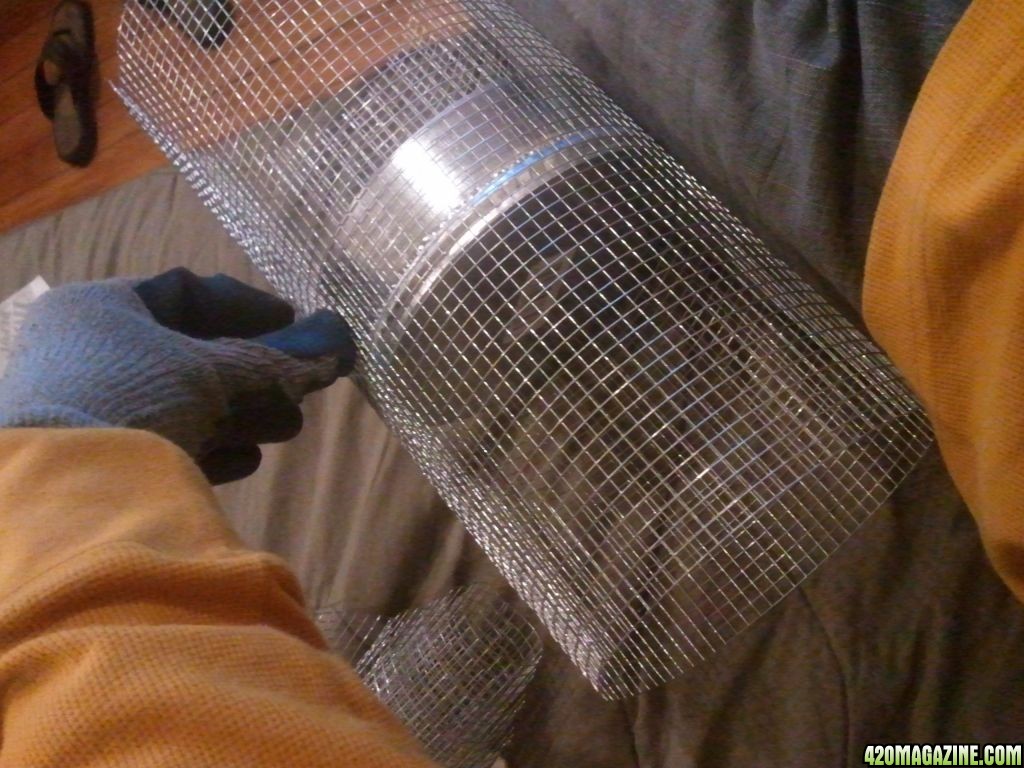
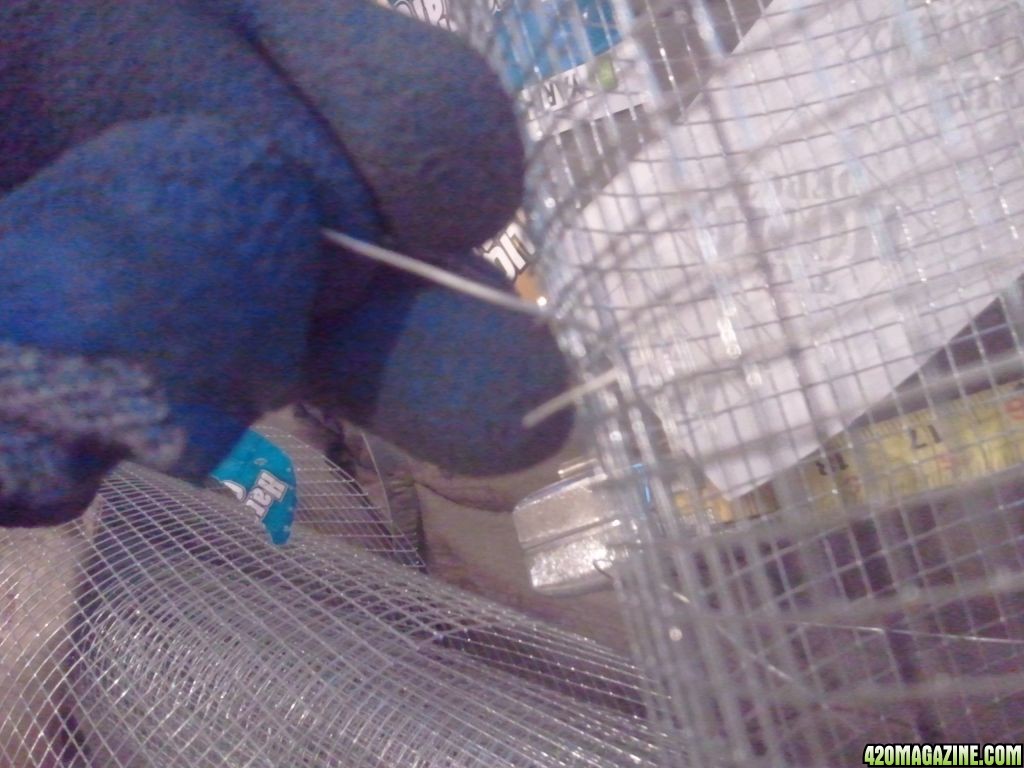
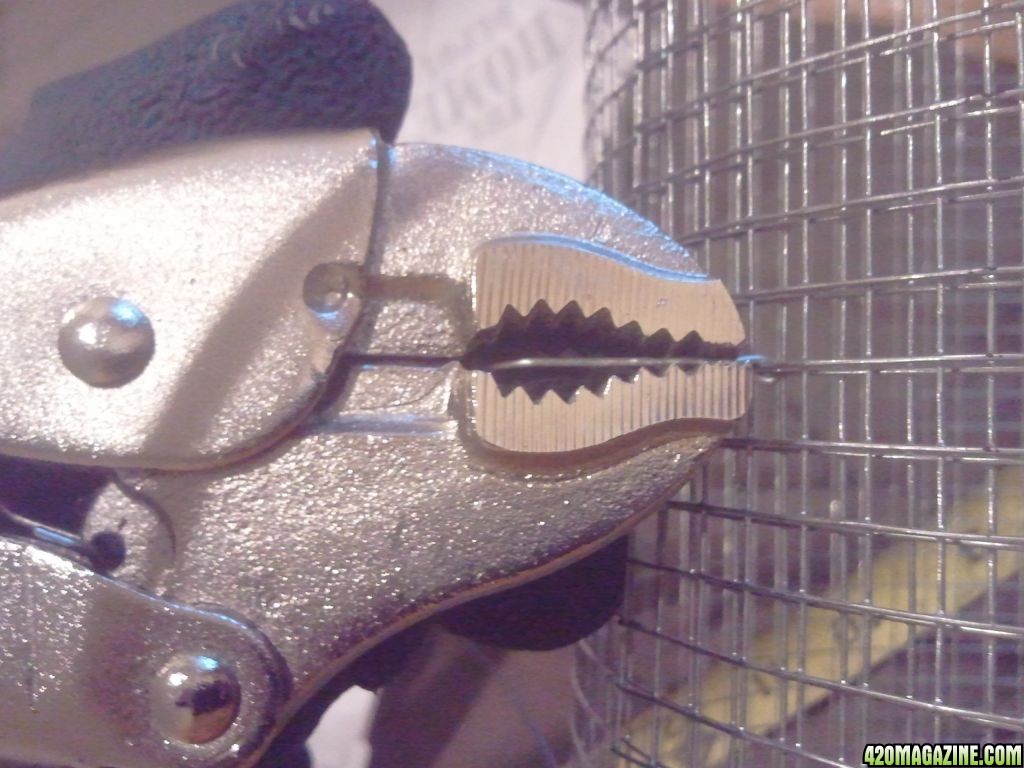
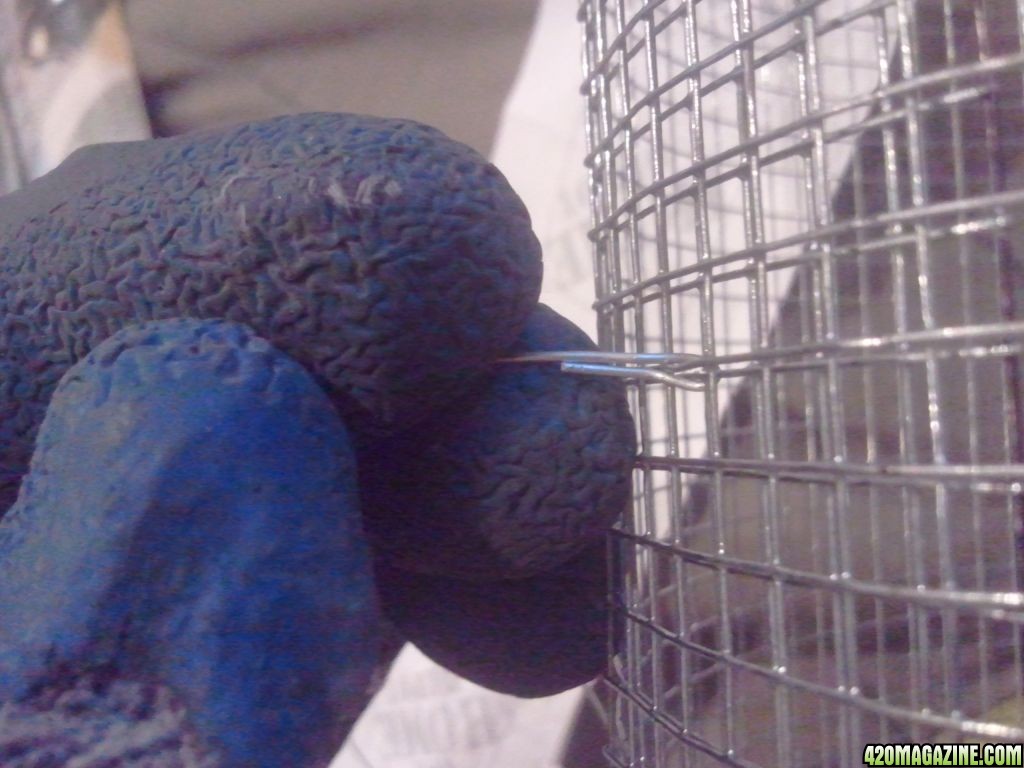
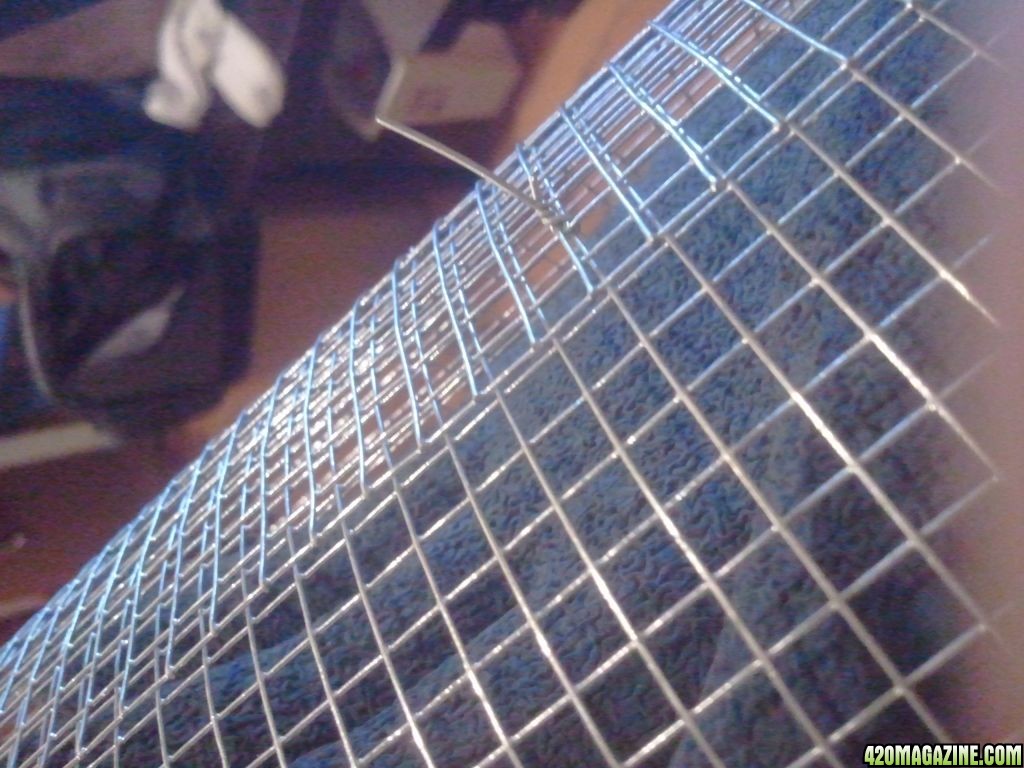
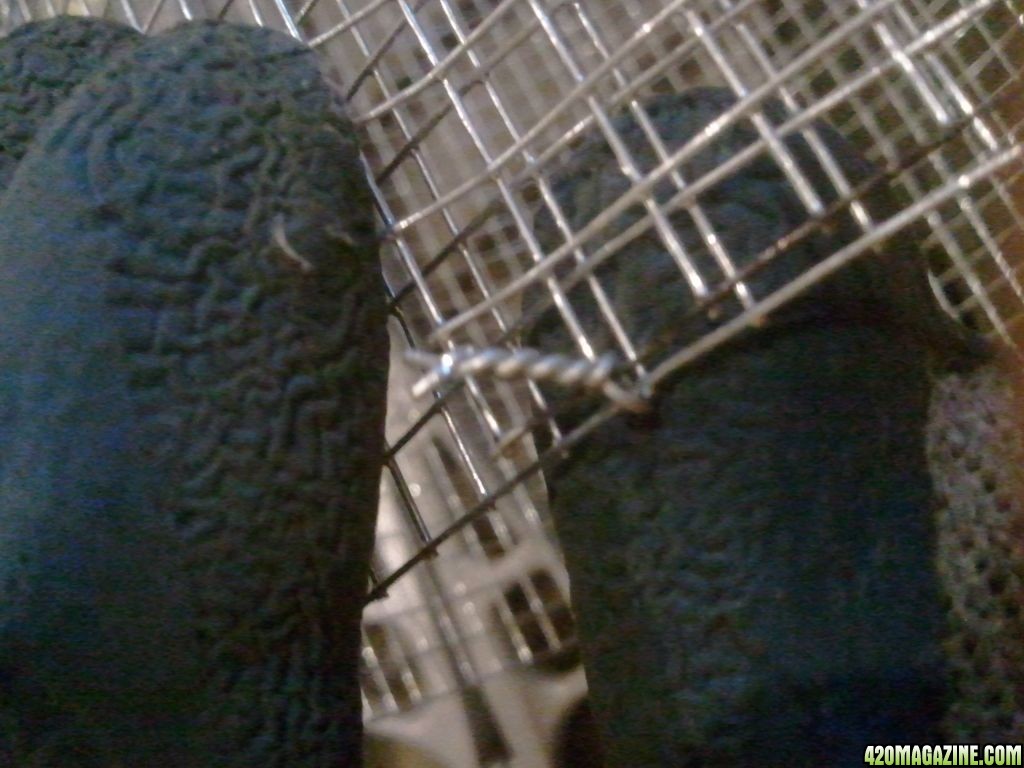
Repeat this process 4-5 times, securing the span of the connection we just made. You should now have a tube of wire that stands on it's own, and is exactly the size to receive a 6" duct. fit the 6" base into one end and you can start rolling the pantyhose carefully onto the tub, end cap first. Avoid snagging the pantyhose, as this is the only thing keeping your carbon in place, we don't want holes or weak spots - this is where cleaning up those snagging ends really pays off! It makes it easier if you roll it up like you would a pair of socks, then stretch it a bit, so that It's not so tight, and slips on without causing you to squeeze the tube so much. Now you can fasten one of the hose clamps over that end of the tube, ensuring that the pantyhose is nice and snugly on, there is no mesh sicking out farther than the end cap, and that the hose clamp will be pinching the mesh and the end cap together. Now we can put the duct connector into the other end, but sticking out enough to have a good connection to the reducing section. I chose to cut off about 1/3 of my duct connector with the wire snips, so that it didn't take up so much room, while still making good contact with everything. I forgot to photo this step, so I threw in a pic of the whole skeleton how it will fit together without the pantyhose, carbon, and clamps. Pull the remaining length of pantyhose the rest of the way off of the tube, and clamp it down using the same precautions as the last step. now you can make sure everything looks good, and fits into the reducer the way you want. You can still loosen the clamps and make any adjustments you want, then cut off the leftover pantyhose dangling off when you're ready.
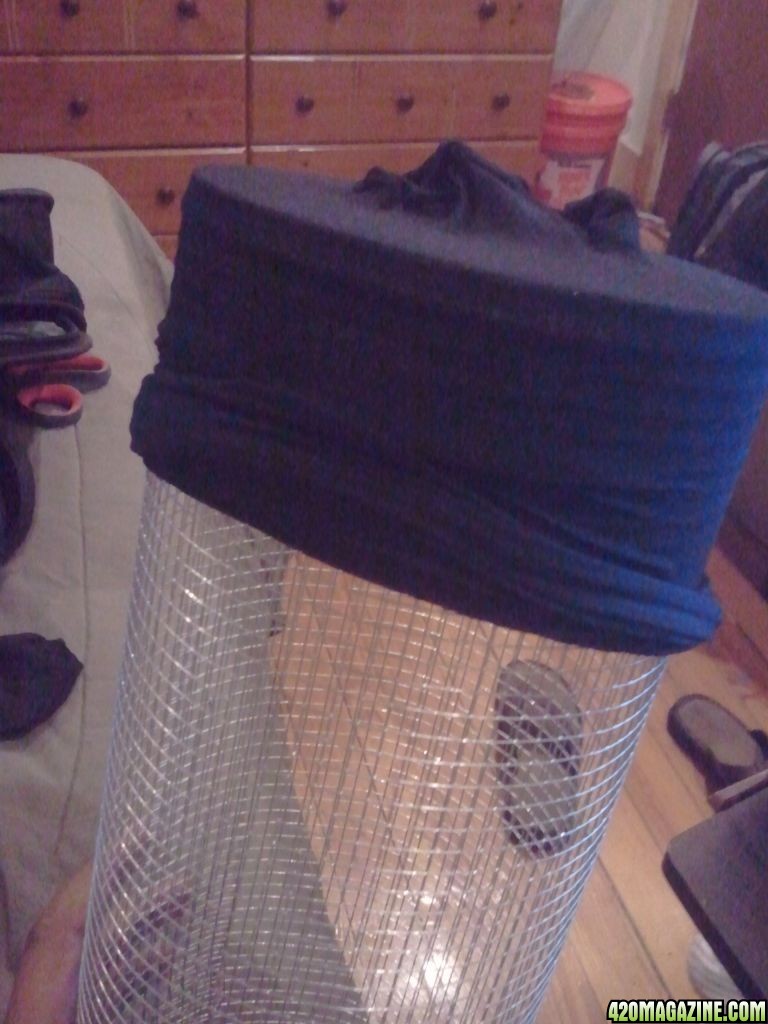
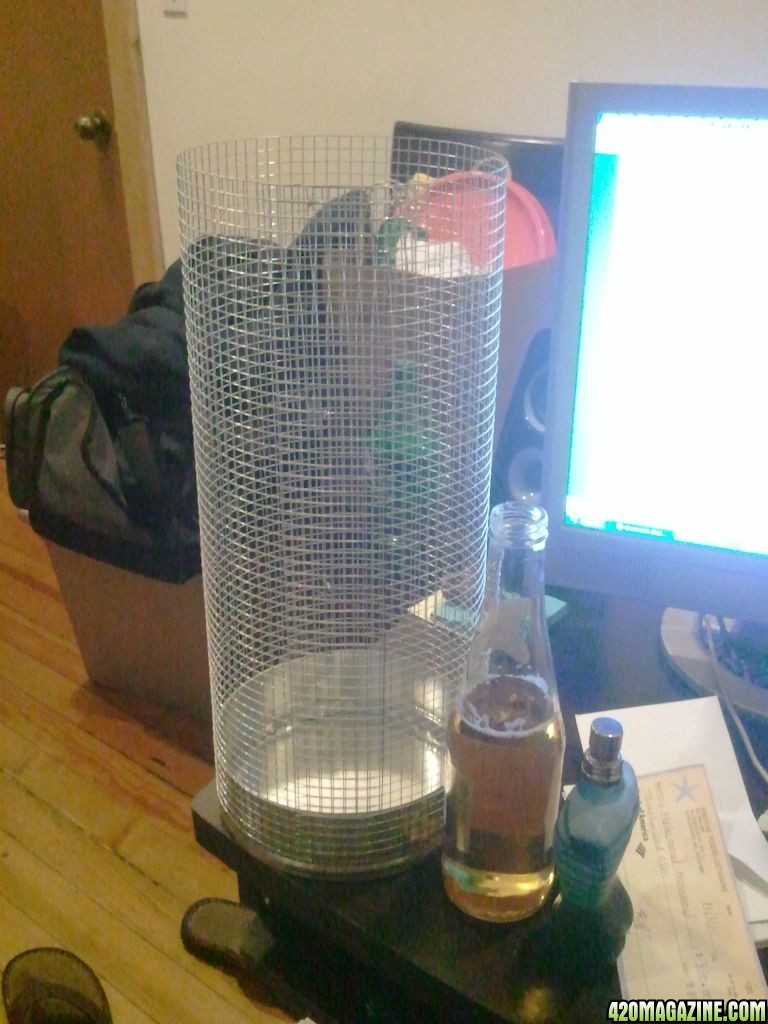
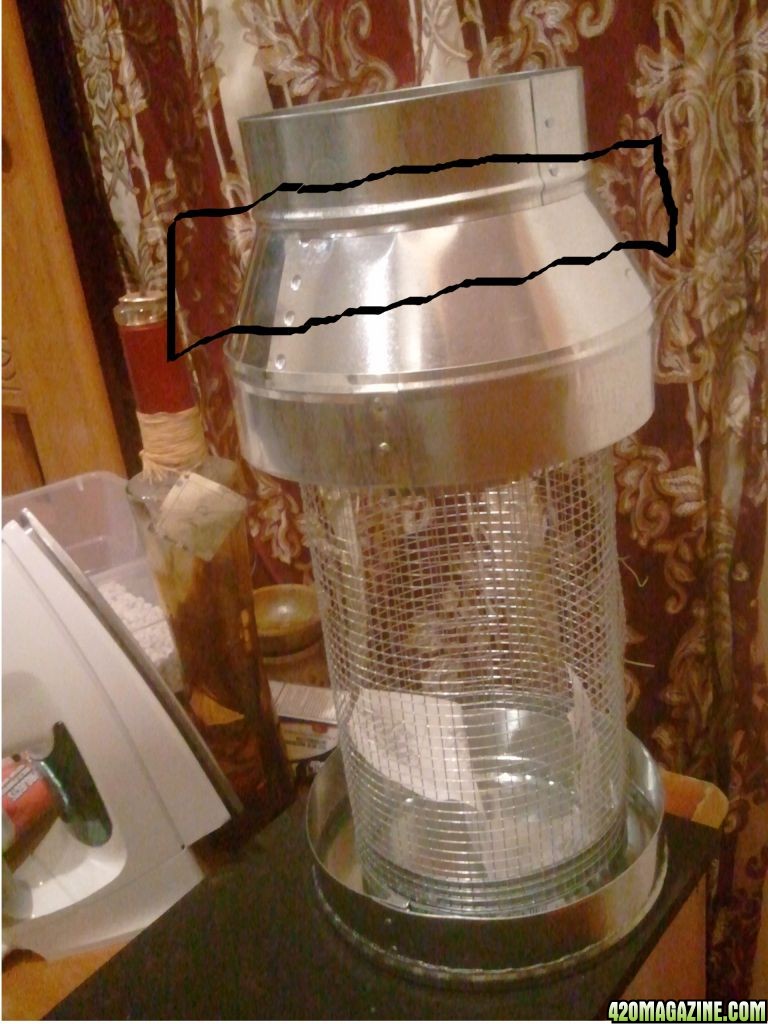
At this stage, I used the epoxy to seal the connection between the duct connector/inner tube to the duct reducer. This ensures that there is an airtight seal in there, but either way, it's gonna be sucking through the carbon, so I guess you can skip this step and save $5. When your glue is dry(if you use any) you can begin making an outer tube the same way we made the inner one, using the 8" end cap, or the reducer for sizing. I didn't remember to measure the sheet for reference on this one. This time, you want to connect the top end first, So after struggling to get your pantyhose over the top of the reducer, pull them down over the wire tube, and hose-clamp in place. I couldn't find 8 1/4" hose clamps locally, so I got (2) 4 1/4" clamps and opened them all the way until the ends came apart, then threaded on onto the other to make one double clamp of 8 1/2". Roll the stockings all the way down, and we're done with the bulk of the mechanical stuff. With the filter sitting on it's head, fill it with rinsed and somewhat dried activated carbon pellets. I rinsed mine just like I do the perlite, put it in a small Tupperware container, fill with water, cover, tilt to one side to allow water to leak out, while carbon stays inside, repeat till water comes out clear. Since I had spare bottles to cut up, I used the top of one as a funnel to make getting the pellets between the two walls less of a chore. Once you get it almost filled with carbon, smack the filter all around it(like how you would slap a dog on it's hind leg when patting him enthusiastically or when clapping comfortably - you want a bit of force to create movement, but you don't want do pulverize the carbon or dent the filter.) to settle the pellets and make them compact against each other. Fill it back up to the very top(or bottom) with pellets. Then you can fit the end cap(make sure to get it on there really well. Tamp it down, shake the filter around to move the pellets and make room, just get that end cap good and snug on there, so there's not too much shifting of the carbon. See how close the bottom of my end cap is to the bottom of the mesh tube?) on and secure with a double hose clamp, flip over, trim the pantyhose from the top end with a razor or some scissors, and you're done!
The last 3 pics are before cutting stockings, view from where fan/ducting will connect(red lines showing where I trimmed and glued the duct connector to the reducer), finished product with bill for scale.
This can be modified to fit many different sizes easily. any size ducting that you can find a reducer for can potentially become the top angled part, and the length can be any length chickenwire comes in, or potentially longer, as you could connect multiple pieces in the same way we made ours loop over. Theoretically, you could have a 12" hi-v fan running a 5 foot long filter that would freshen up the dankiest grows for a year or two





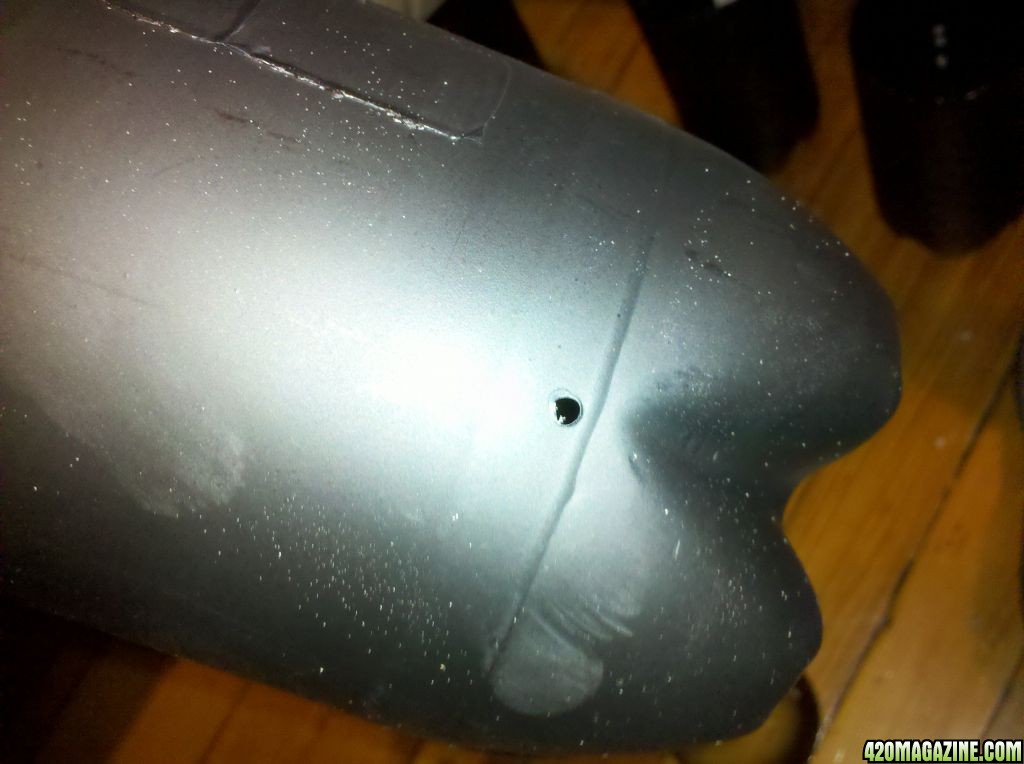

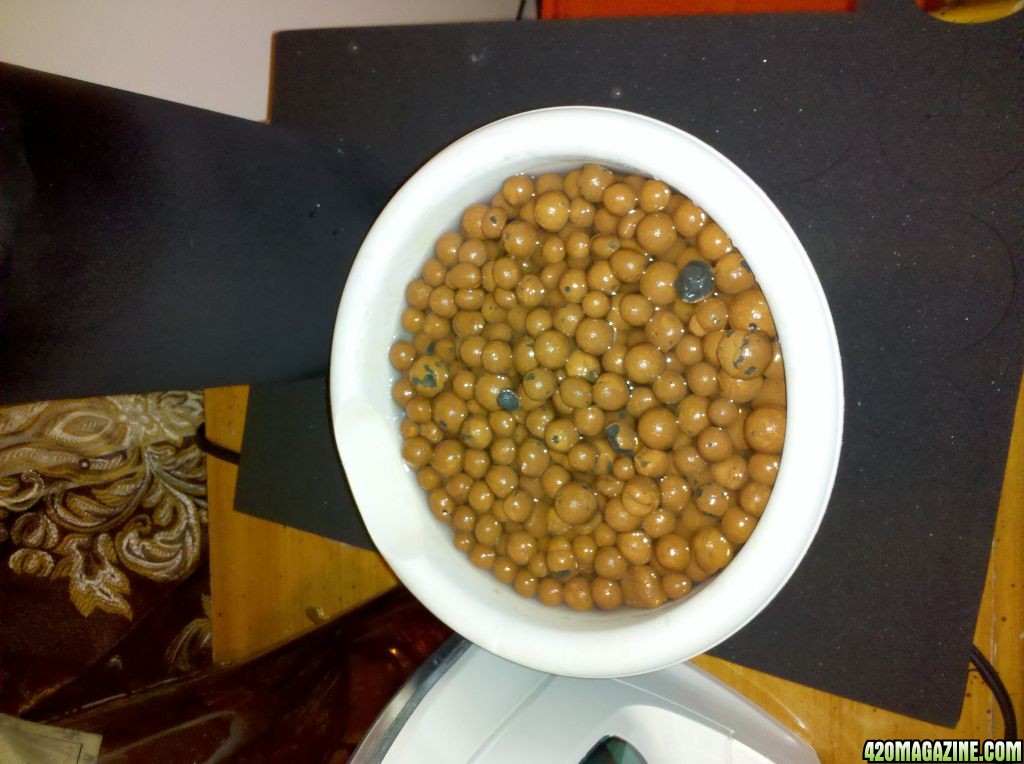
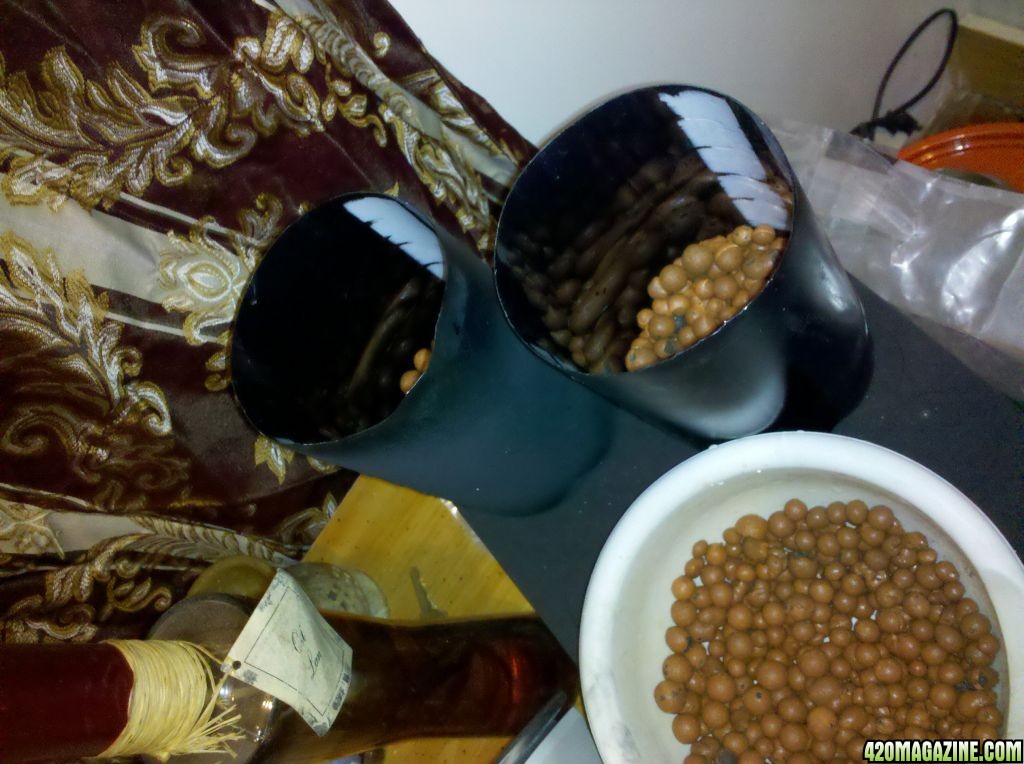
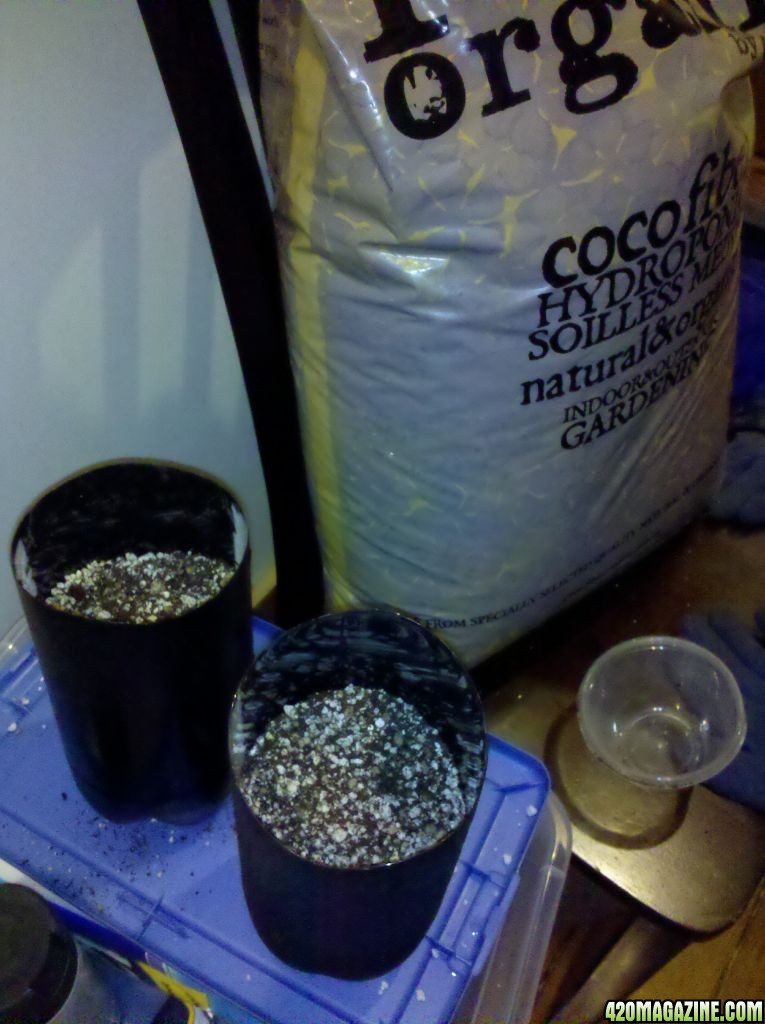
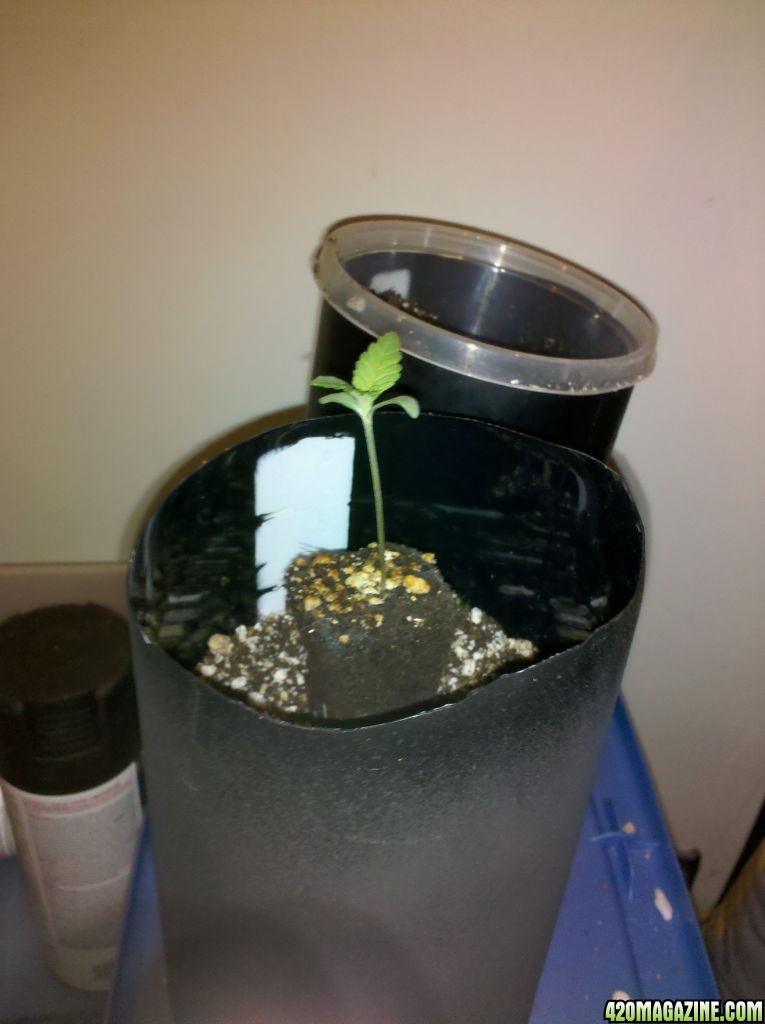
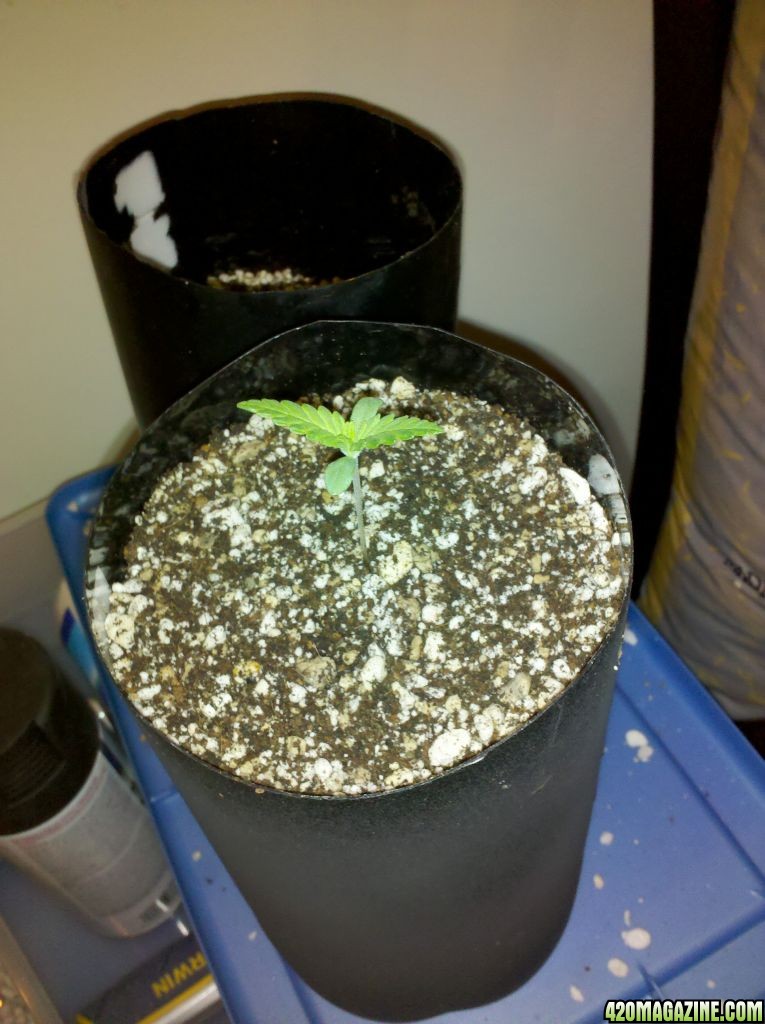
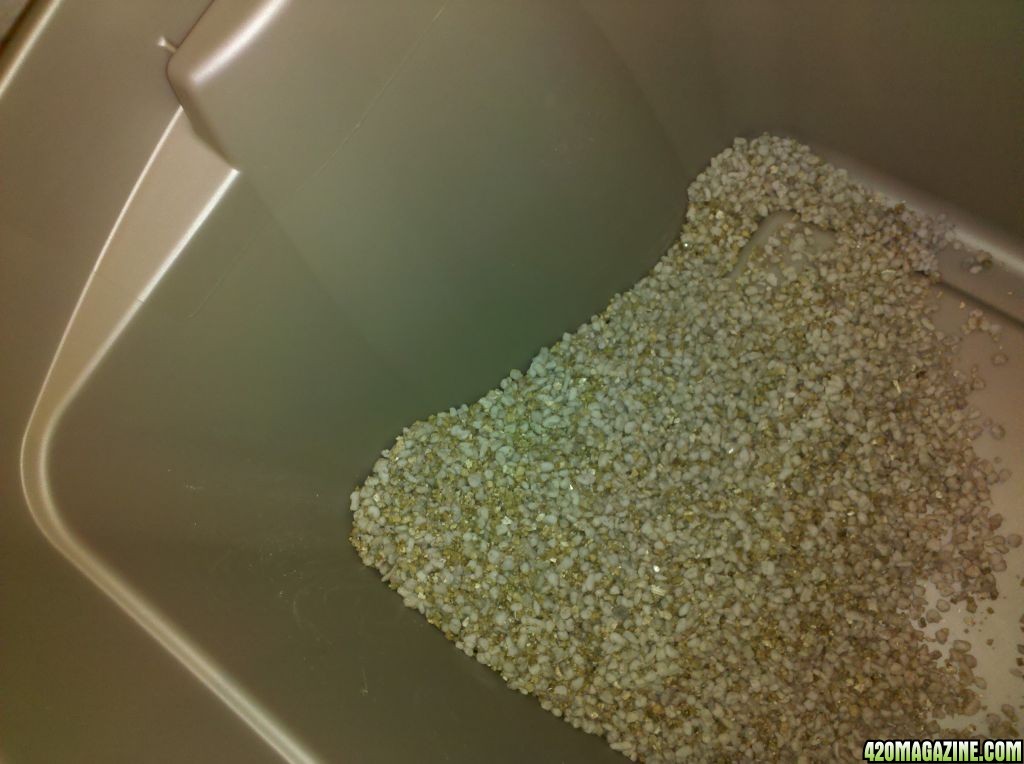
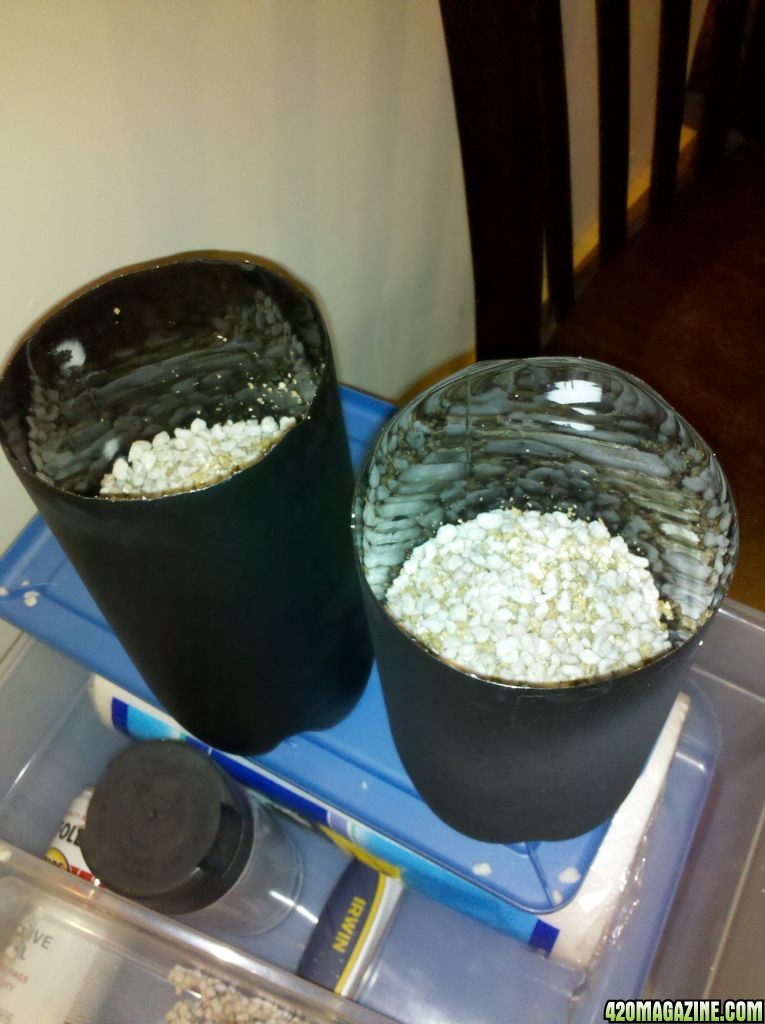
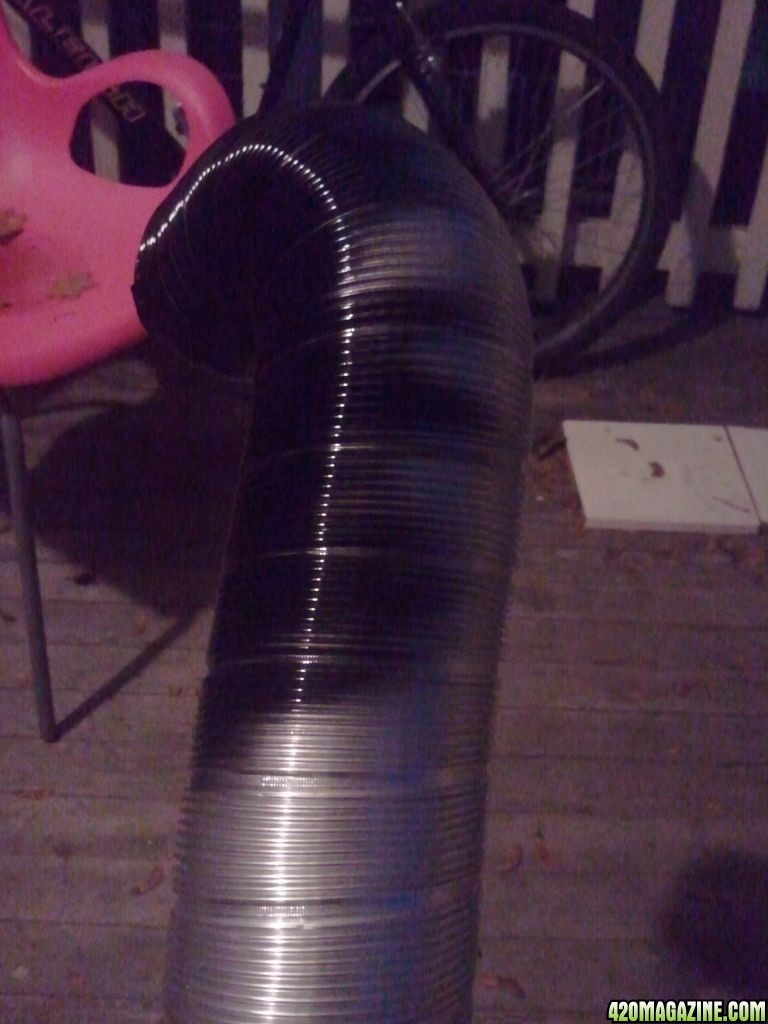
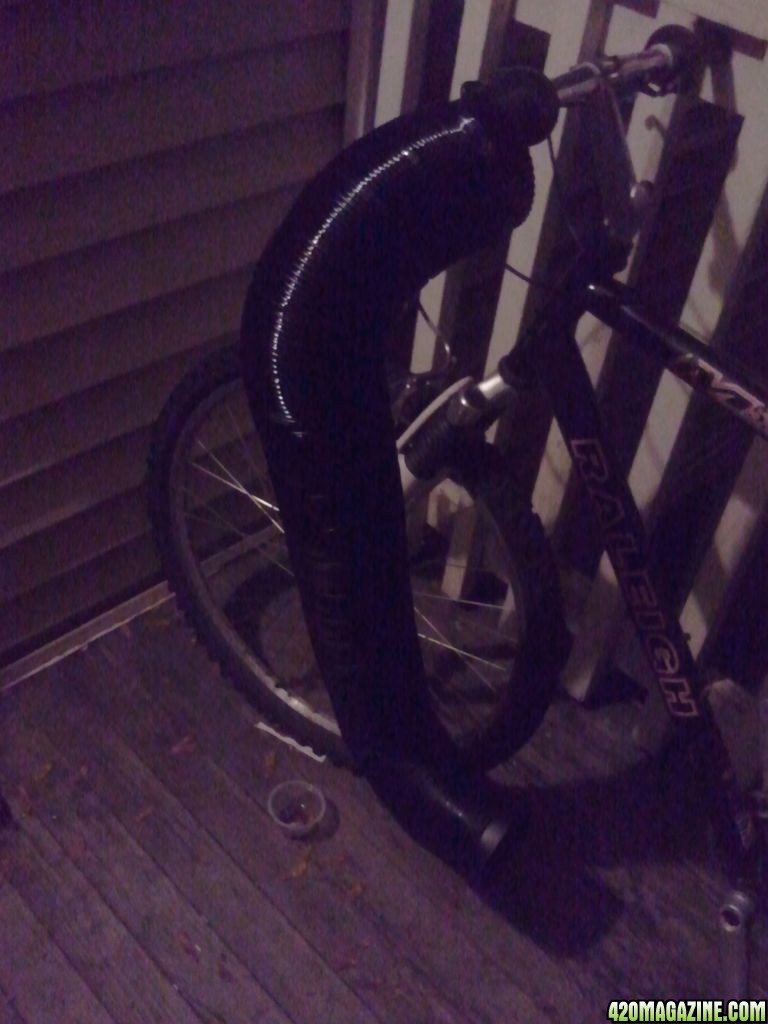
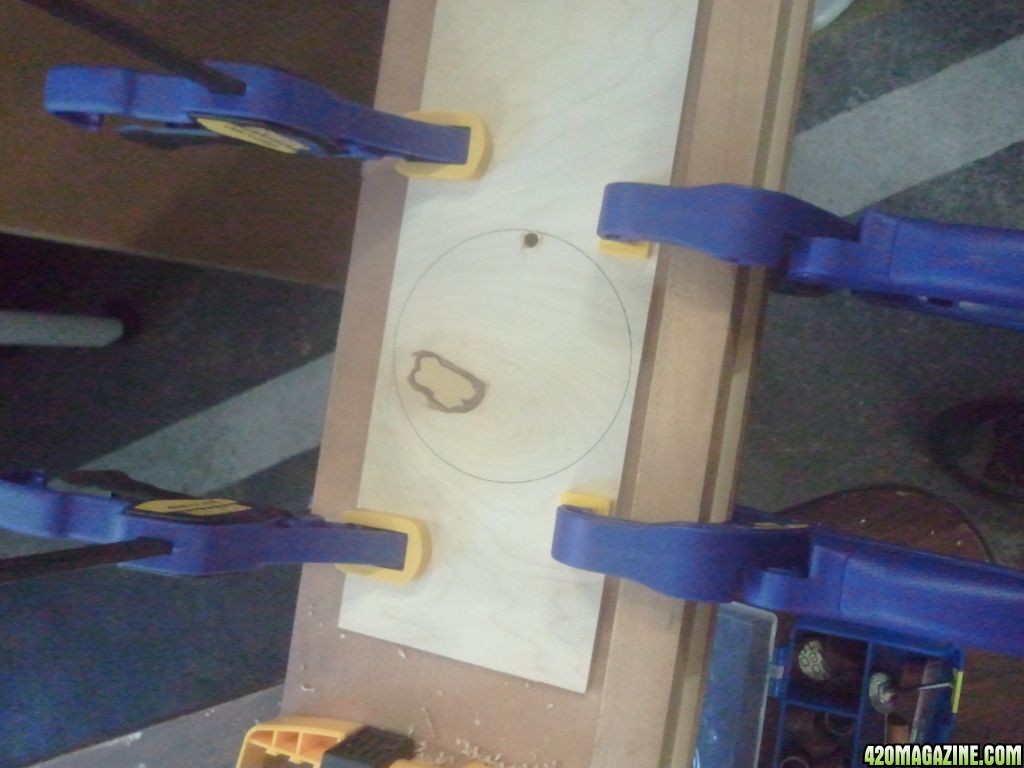
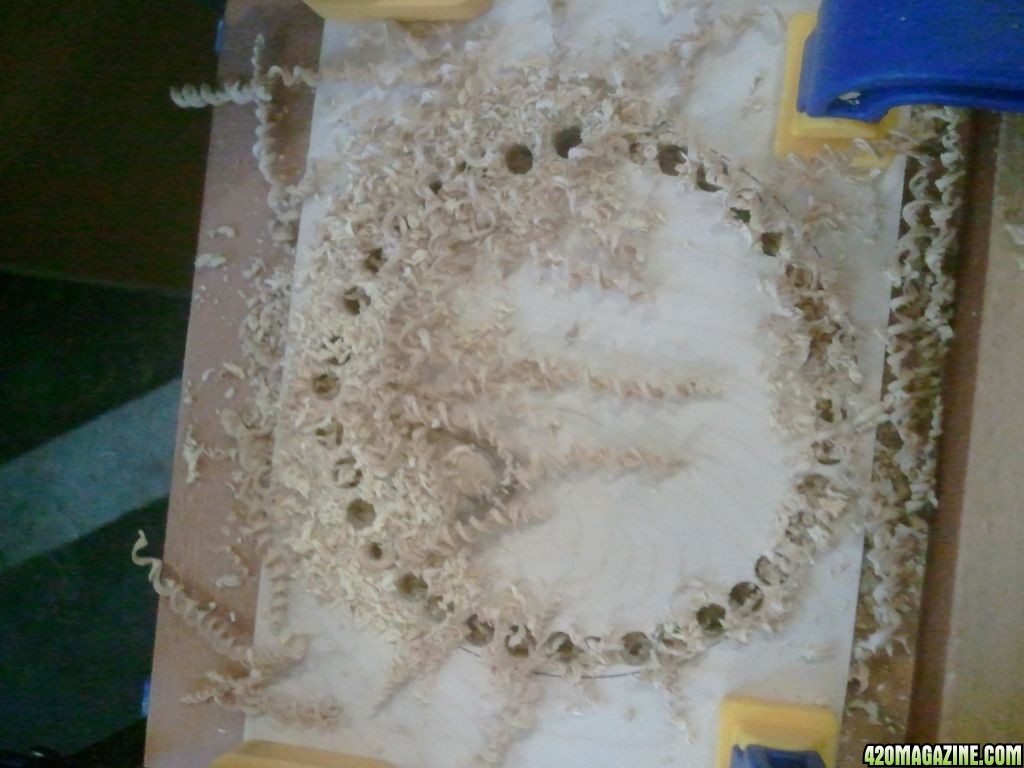
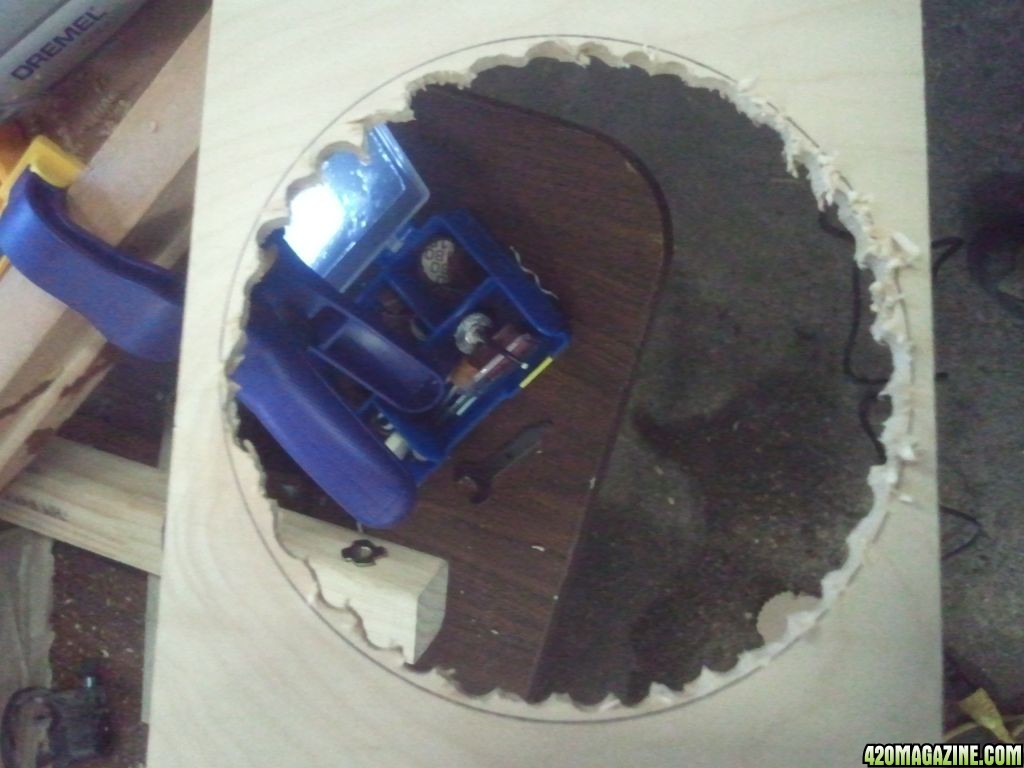
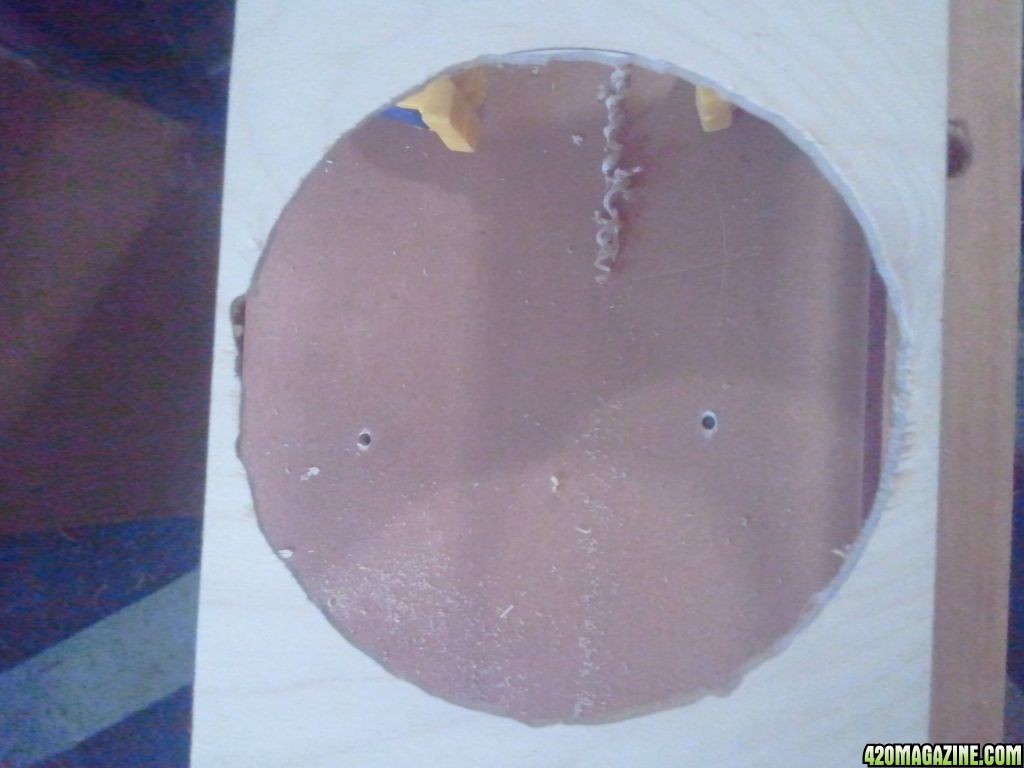
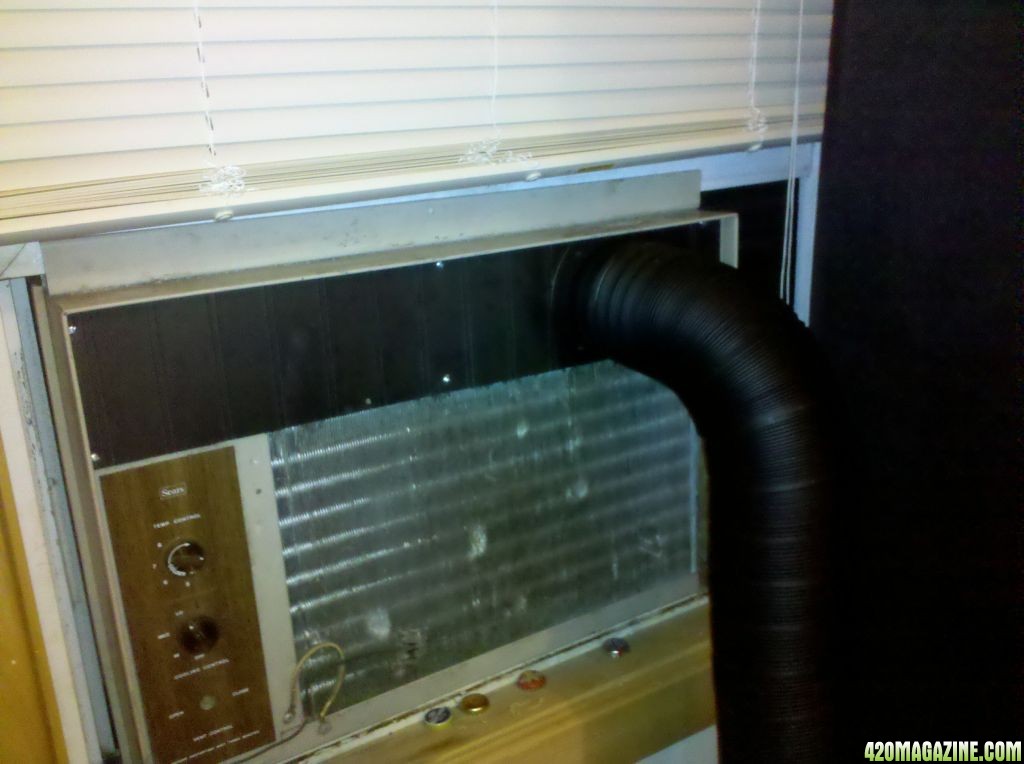
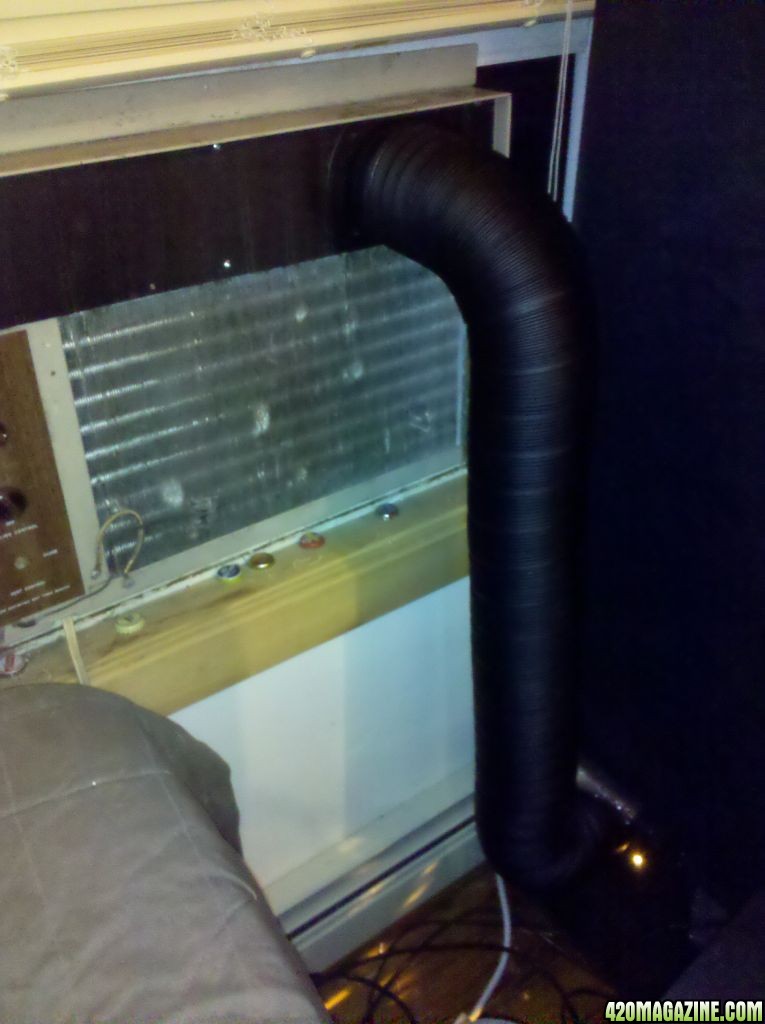
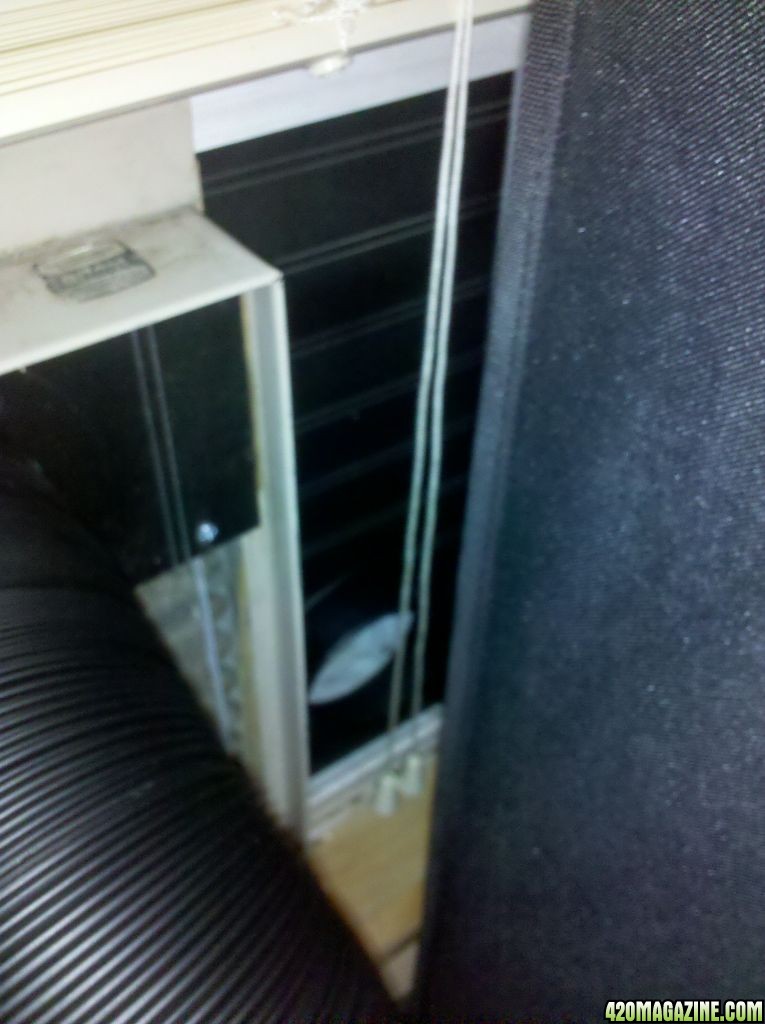
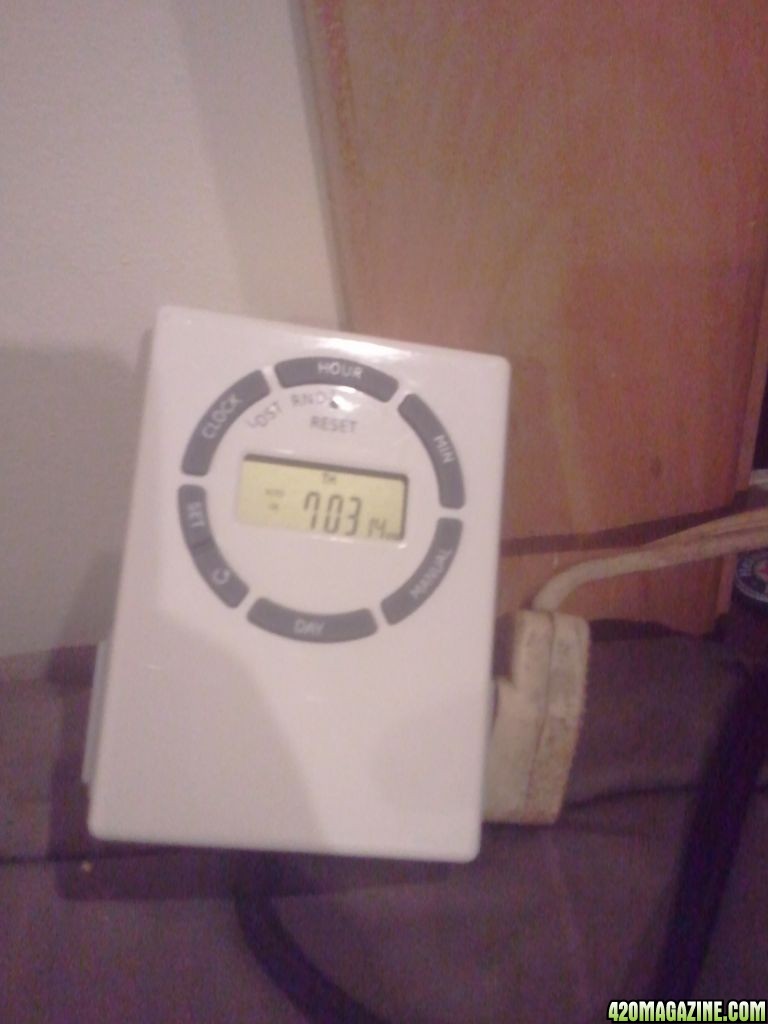
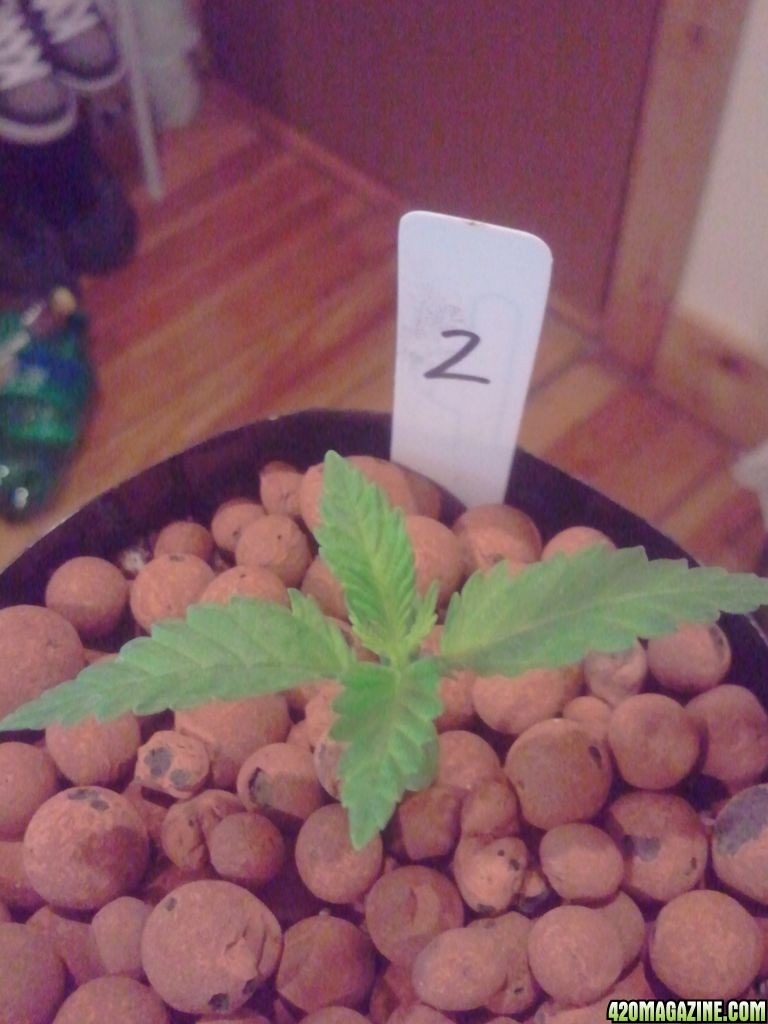

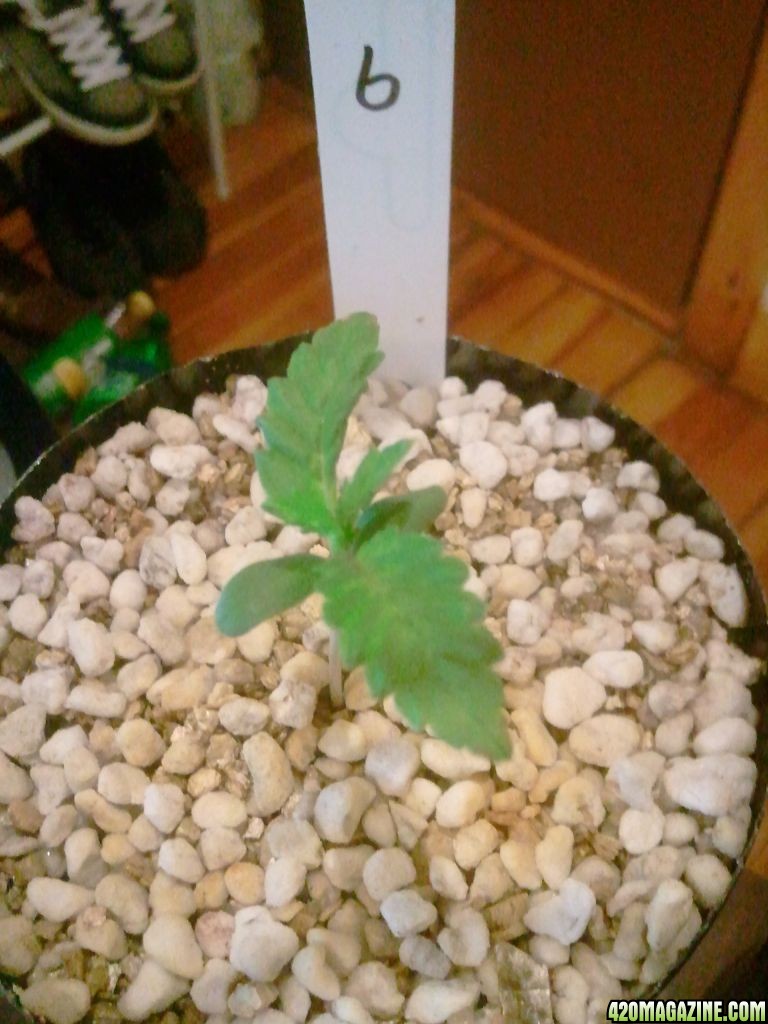

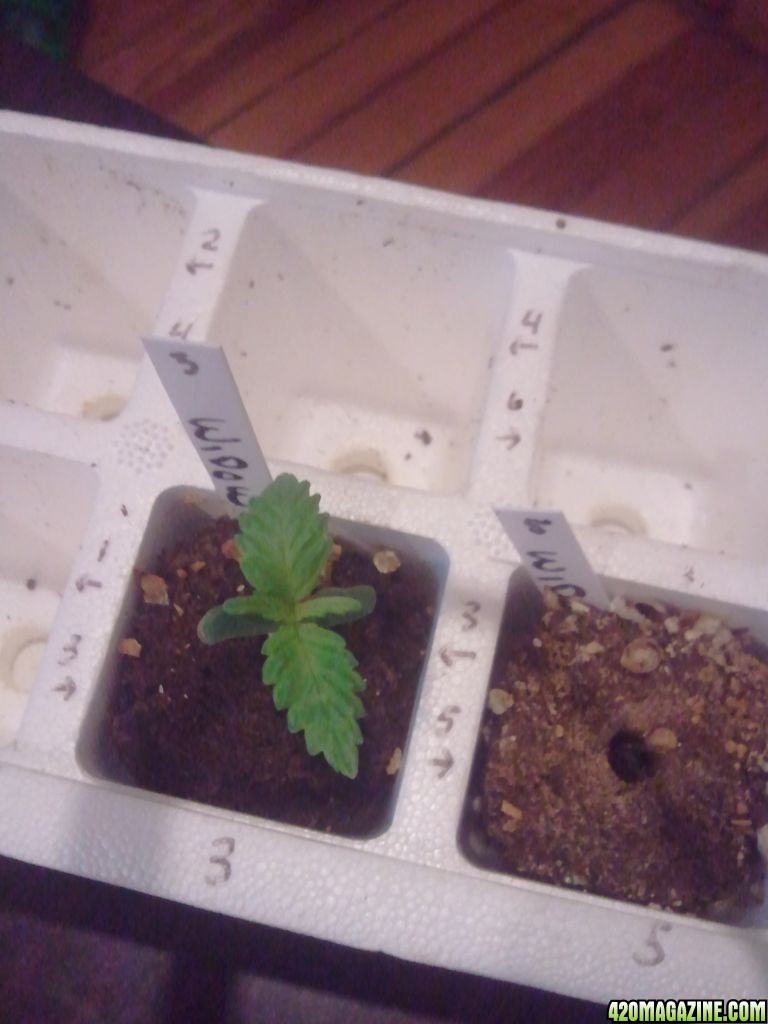
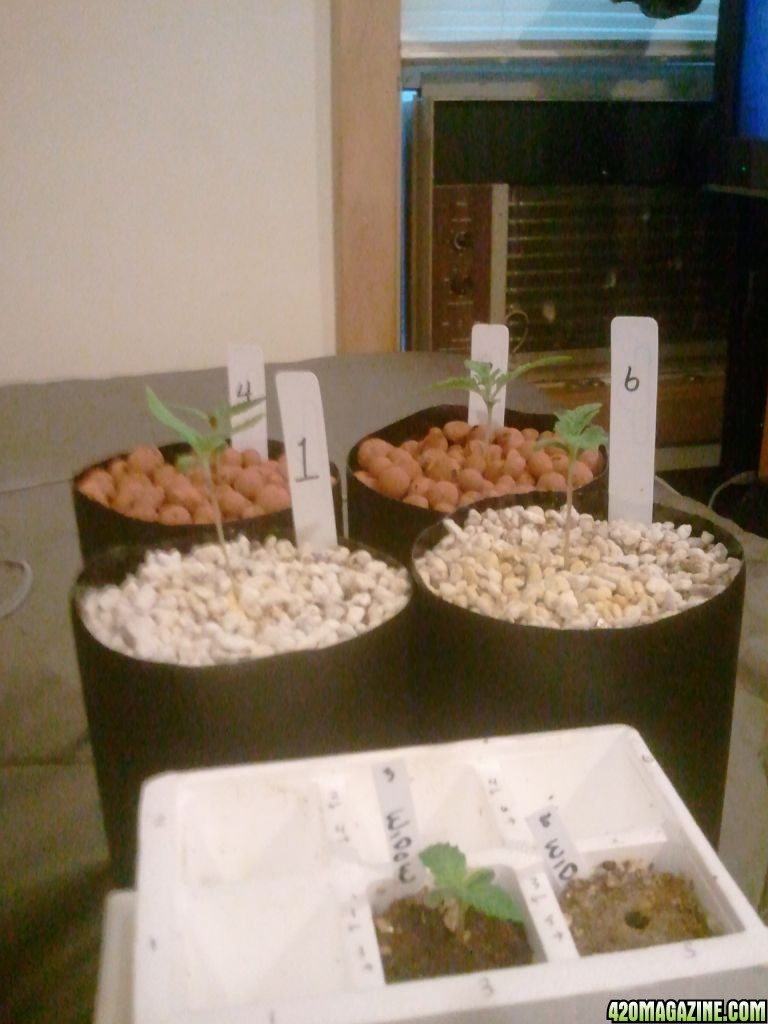
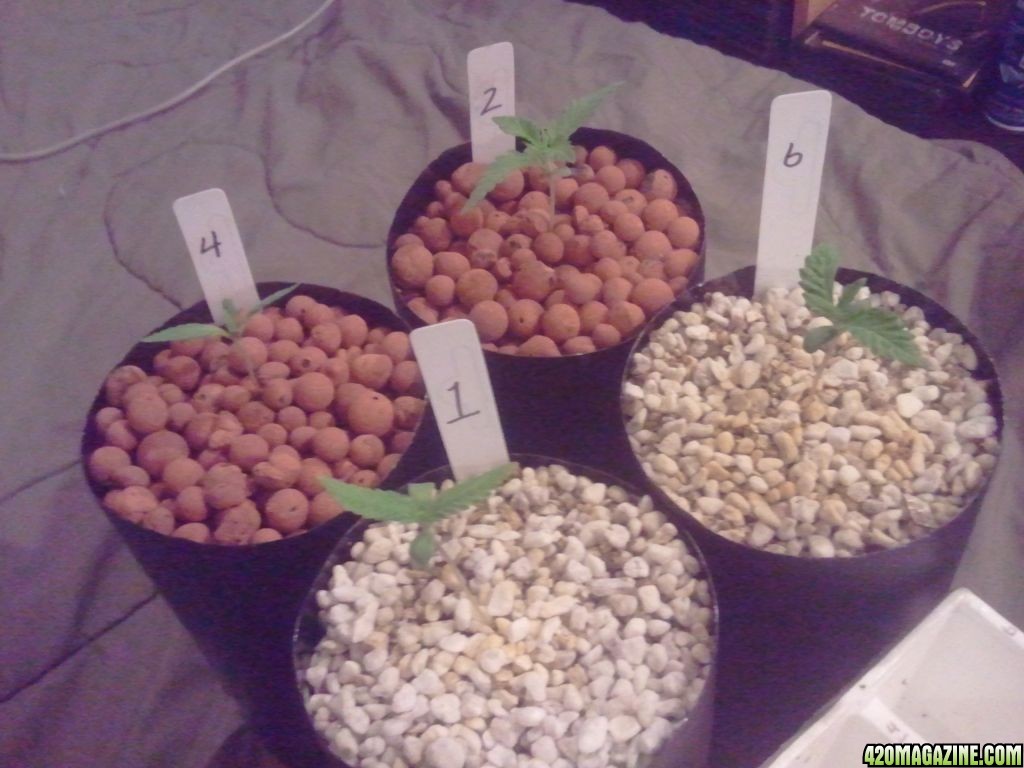





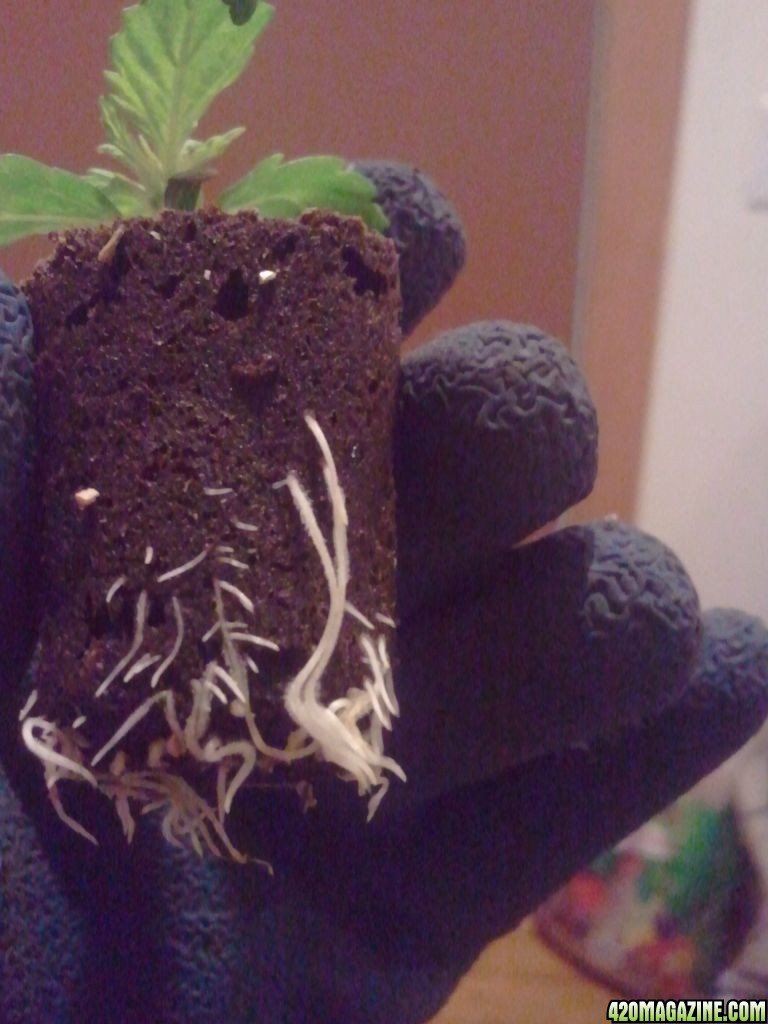
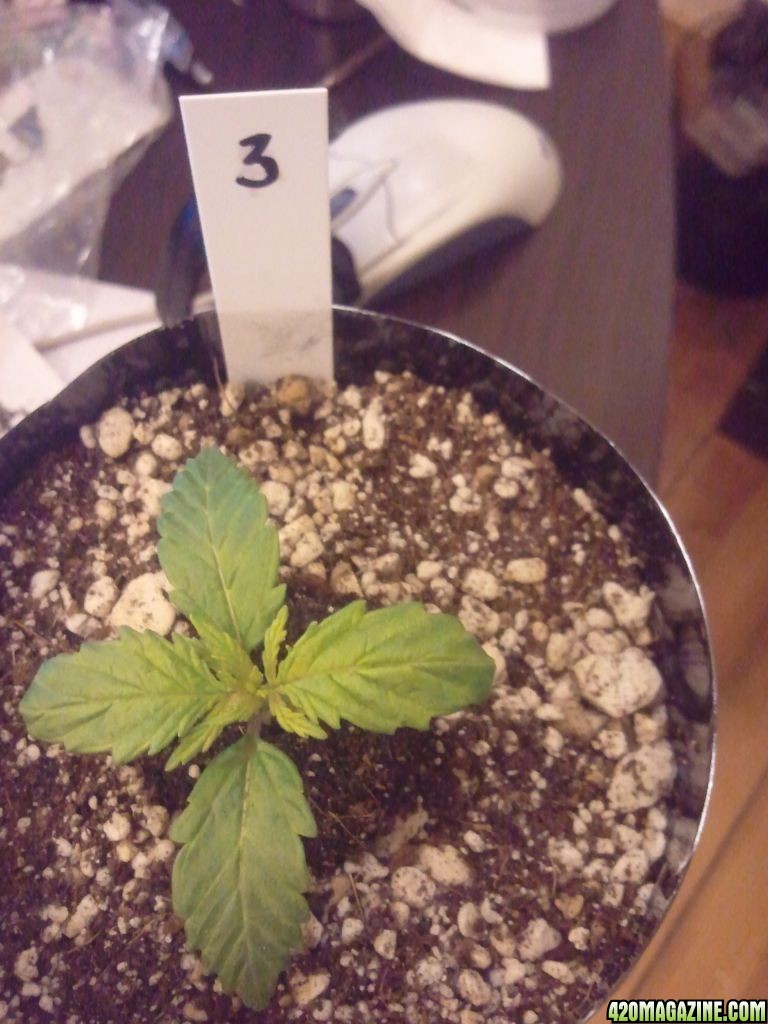
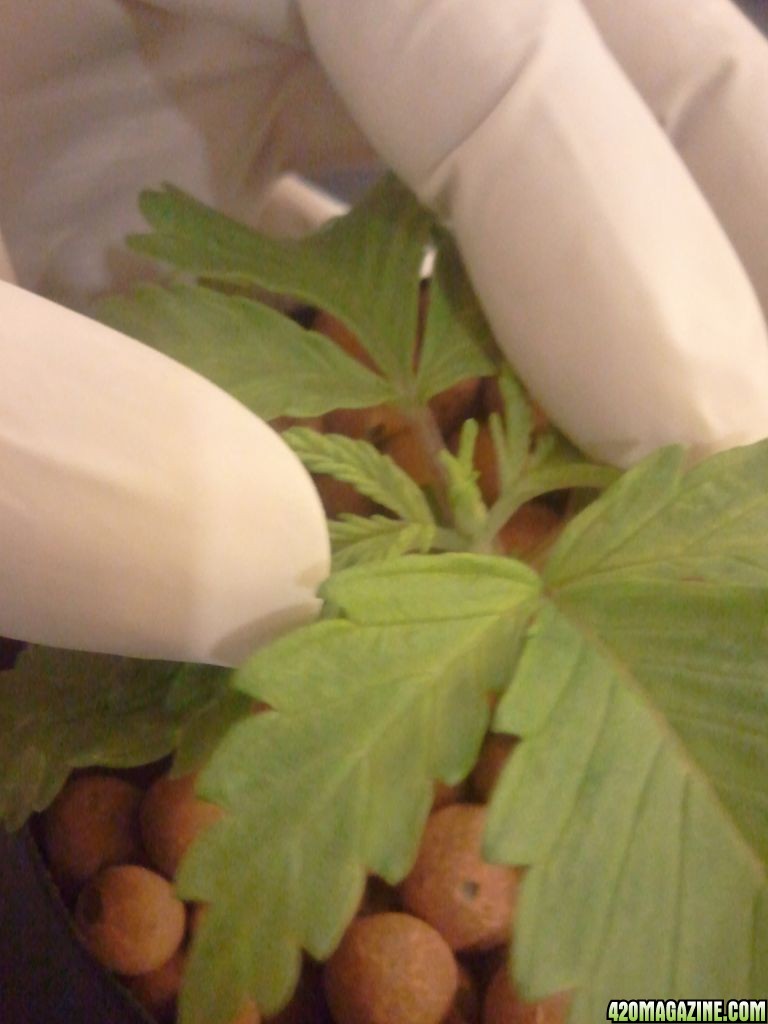
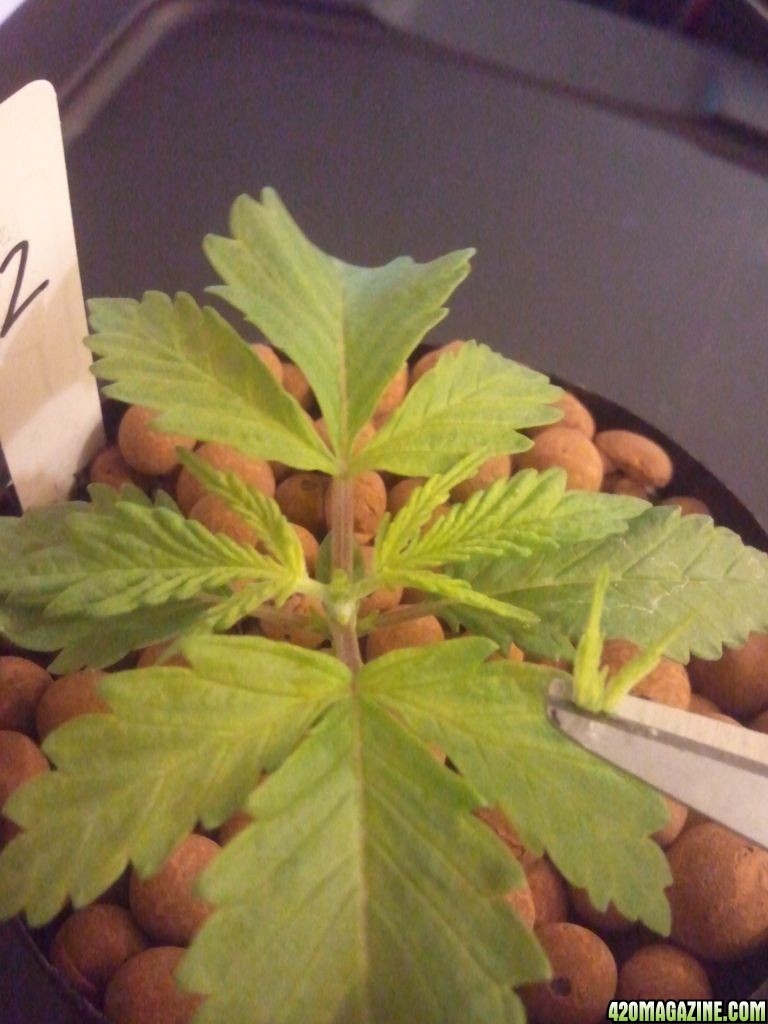
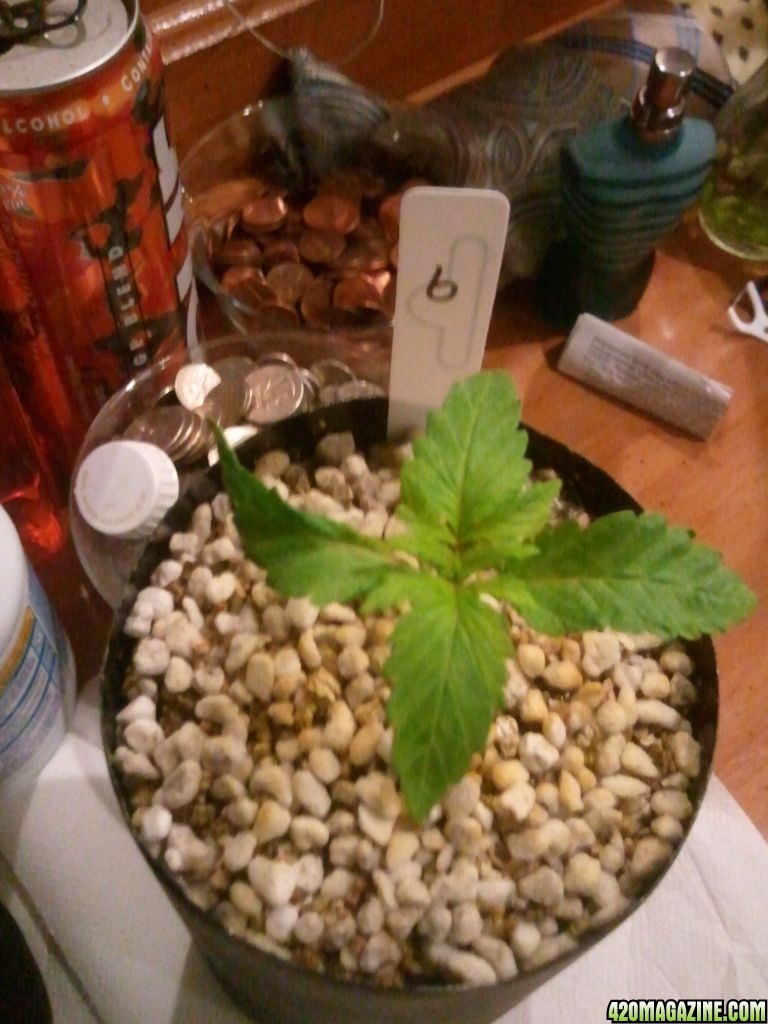
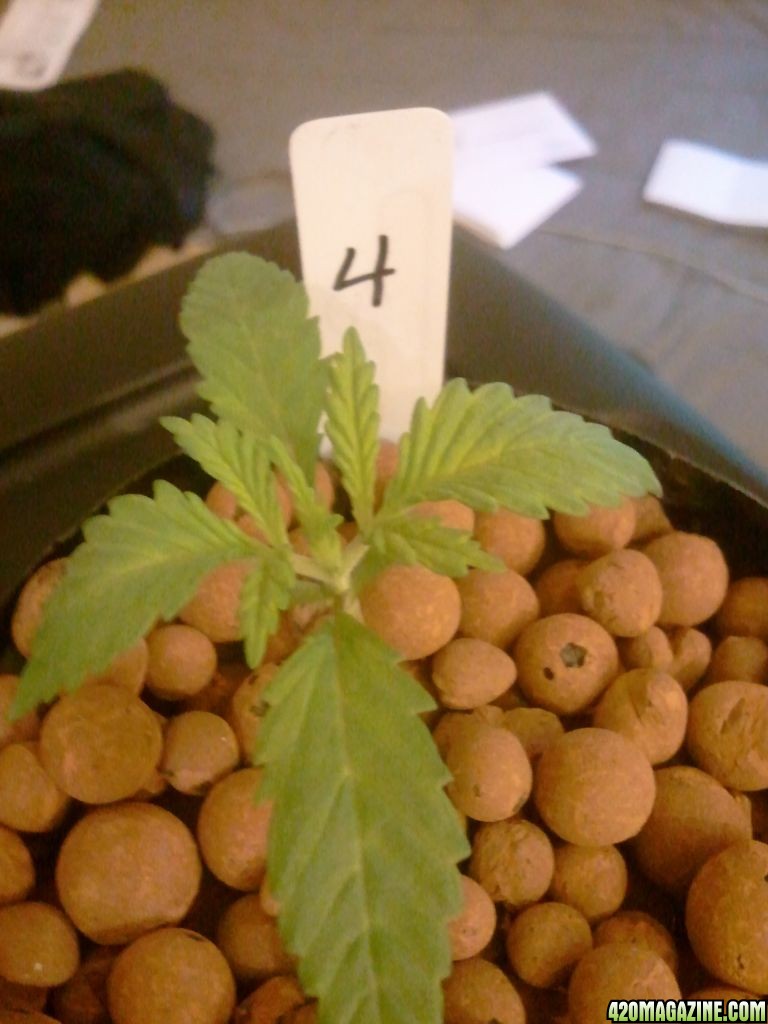
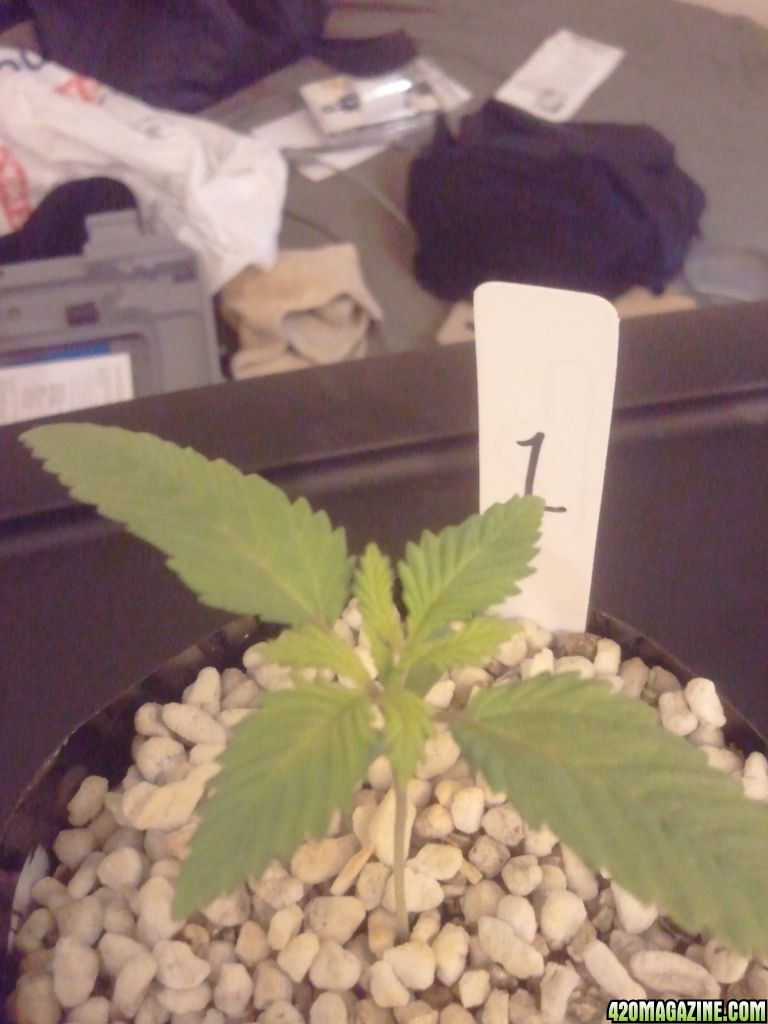











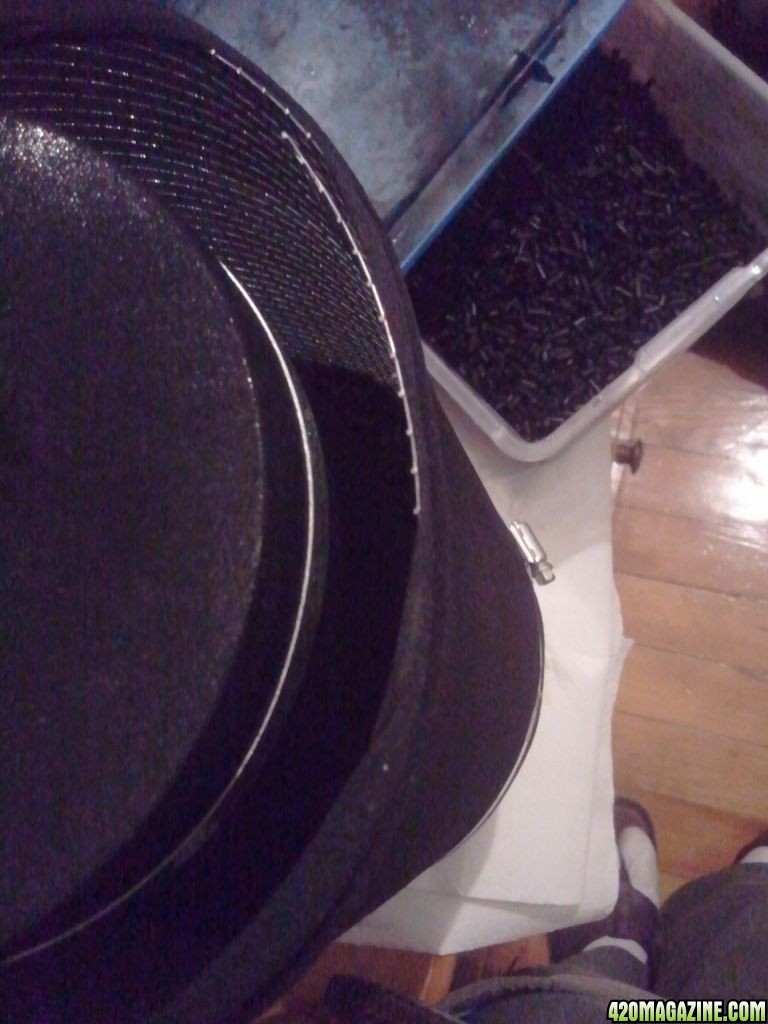
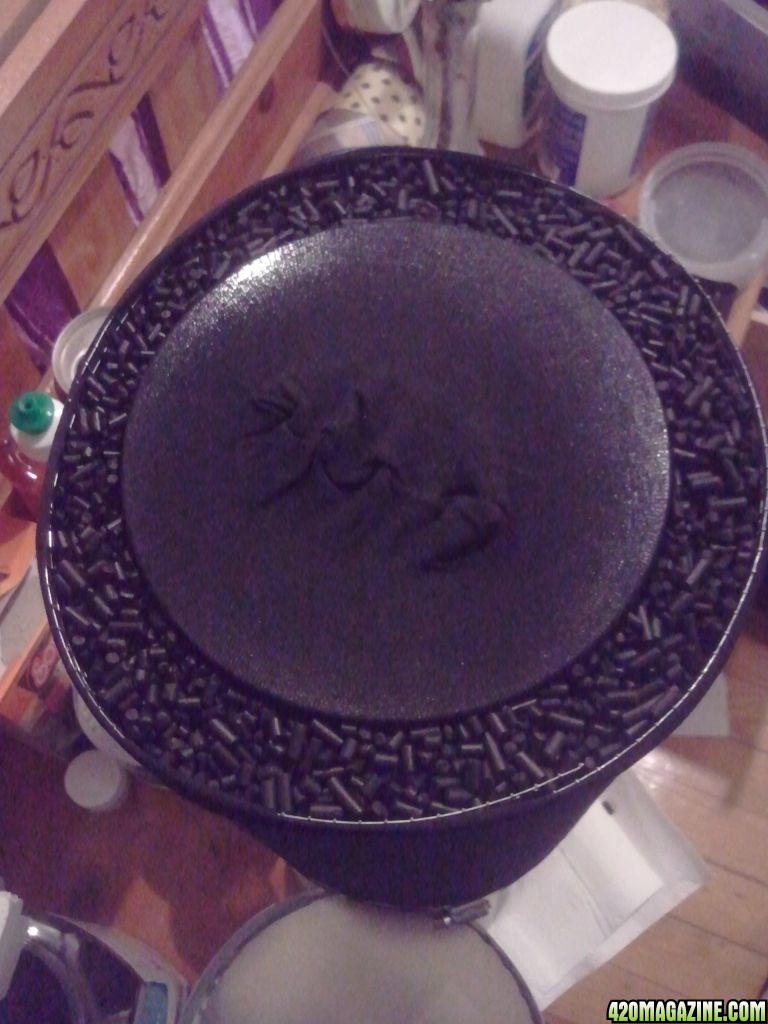
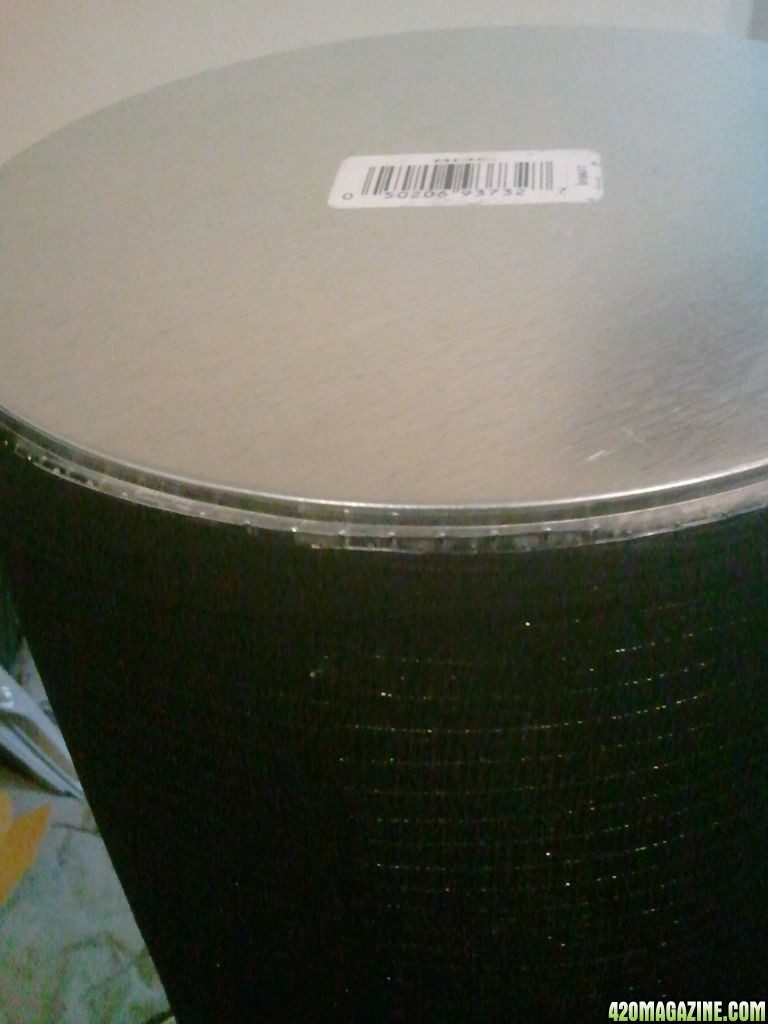
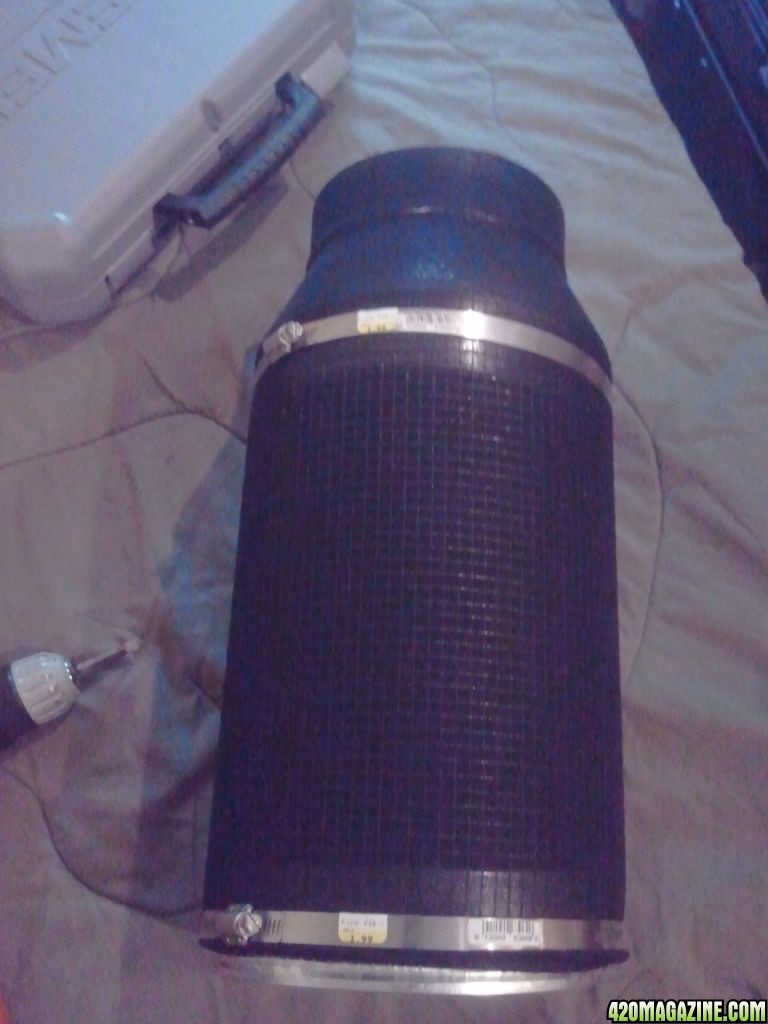
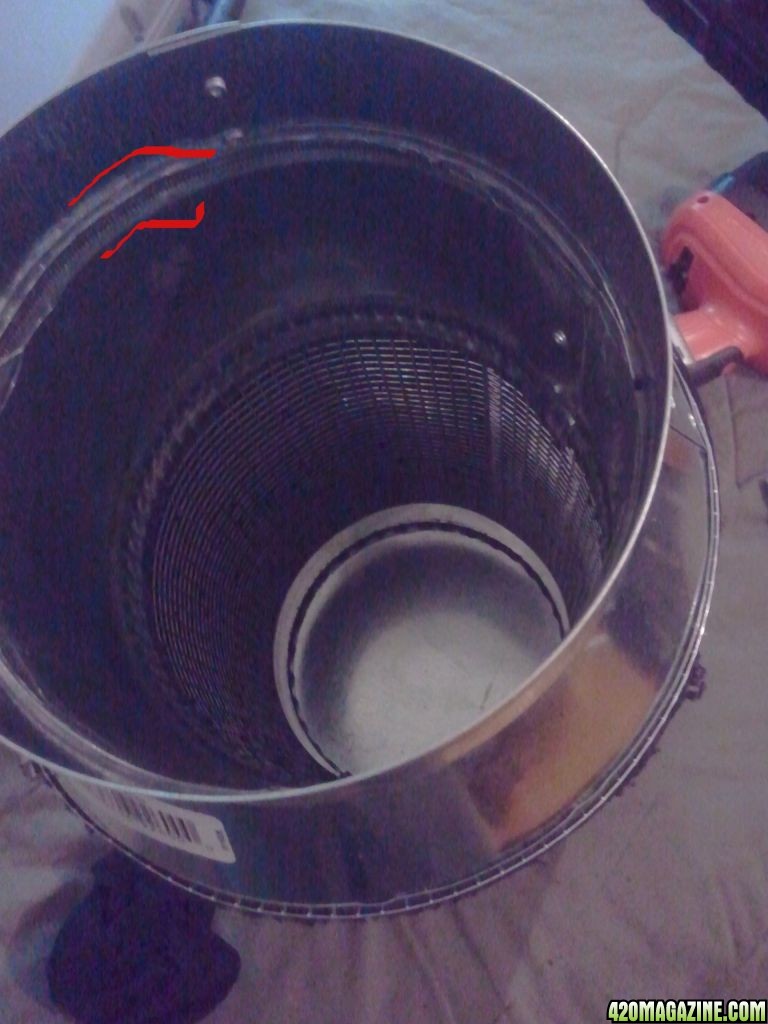
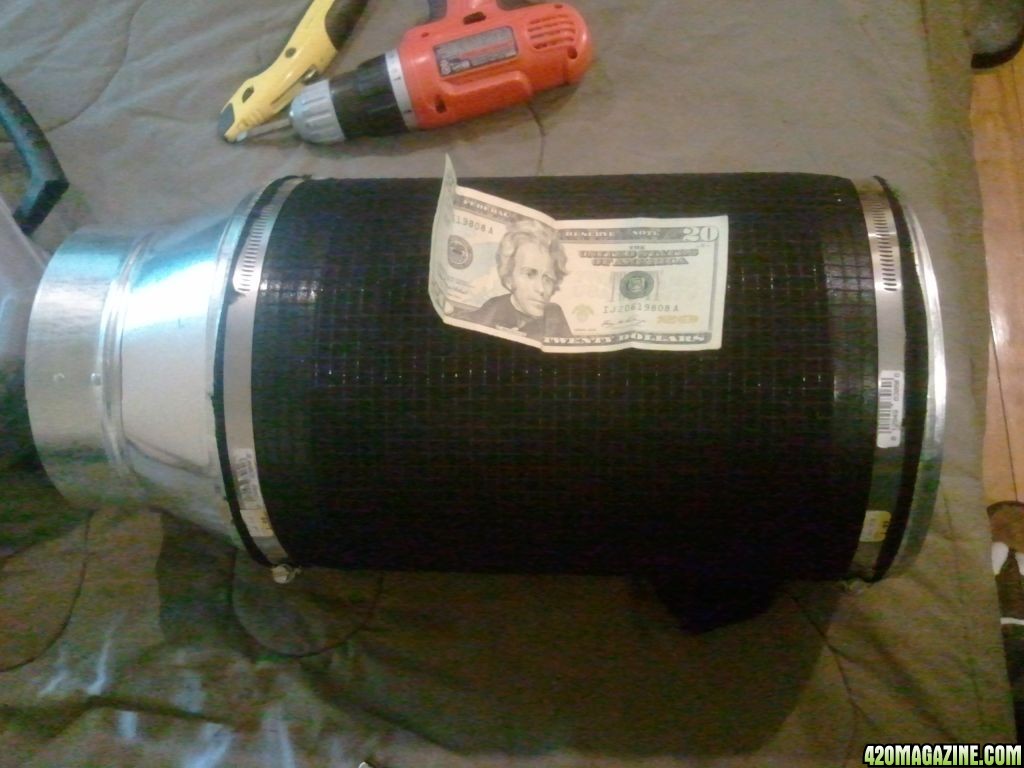
 the "net pot" is a first attempt/experiment, the hole size was determined by the biggest dremel bit i had available at the time,
the "net pot" is a first attempt/experiment, the hole size was determined by the biggest dremel bit i had available at the time,
 my next update will involve fim,lst,and moving seedlings out of micro pearlite hempys to ffof soil, cuz the seedlings are for seed and hopefully a mother or 2 (working on creating my own strain) will post it in the next 48hrs
my next update will involve fim,lst,and moving seedlings out of micro pearlite hempys to ffof soil, cuz the seedlings are for seed and hopefully a mother or 2 (working on creating my own strain) will post it in the next 48hrs